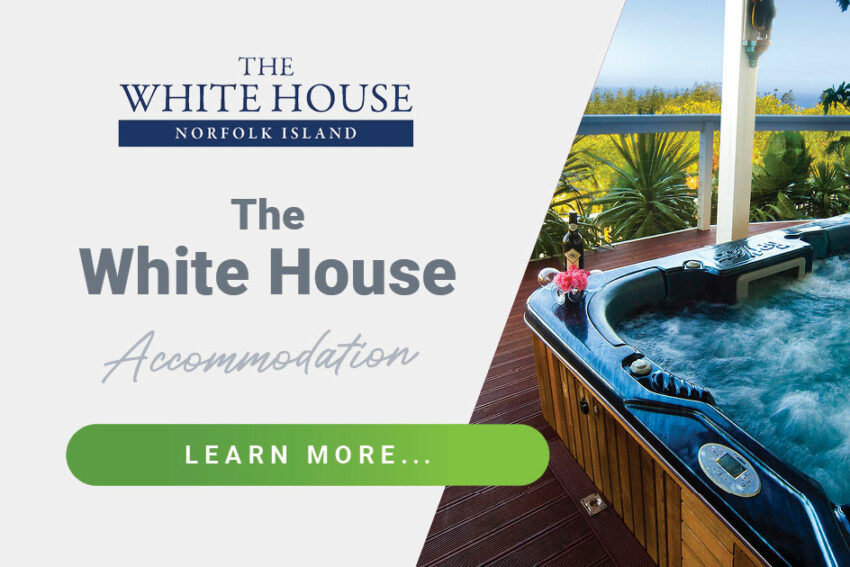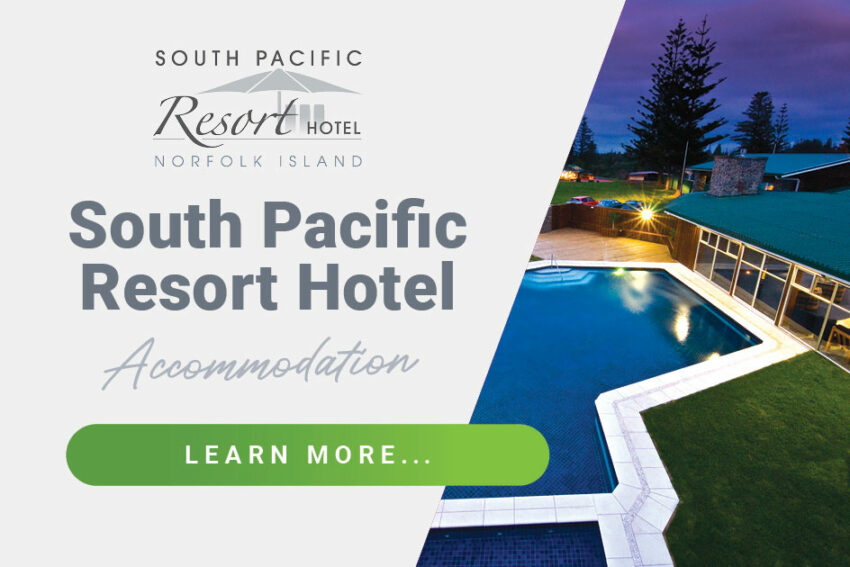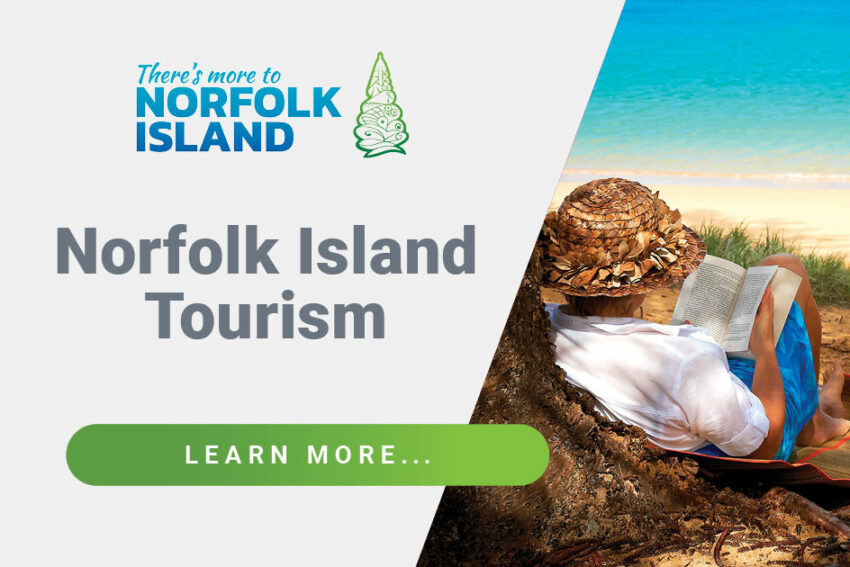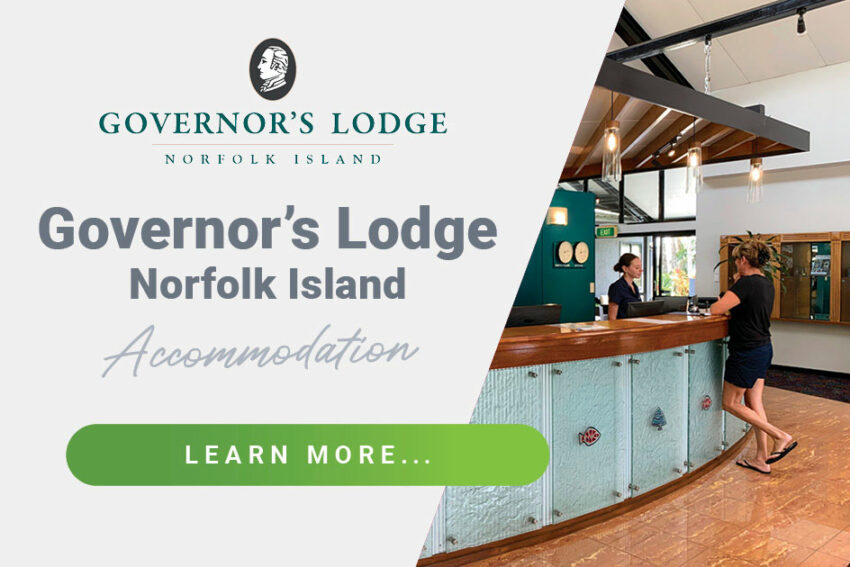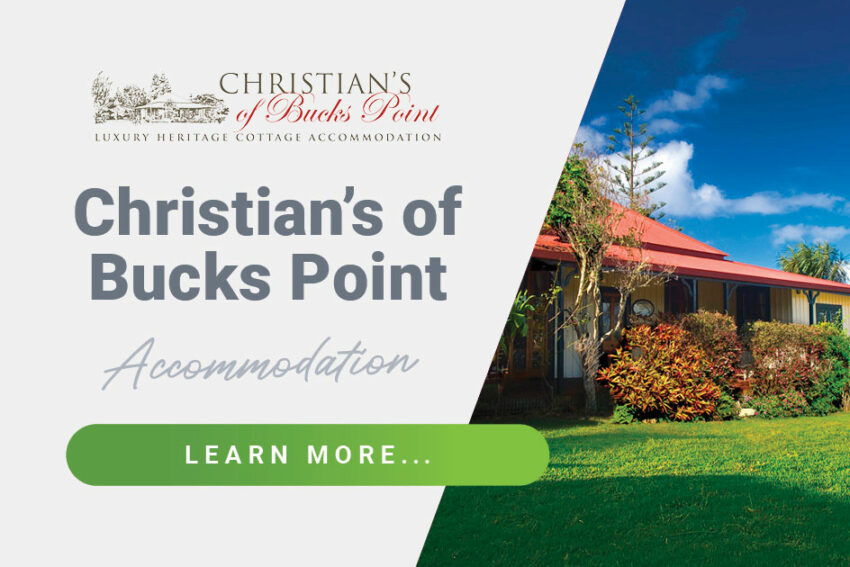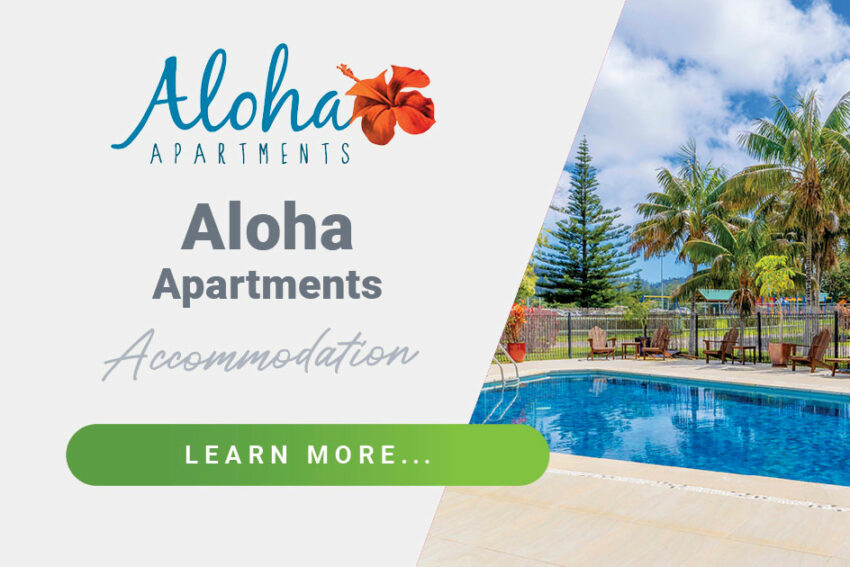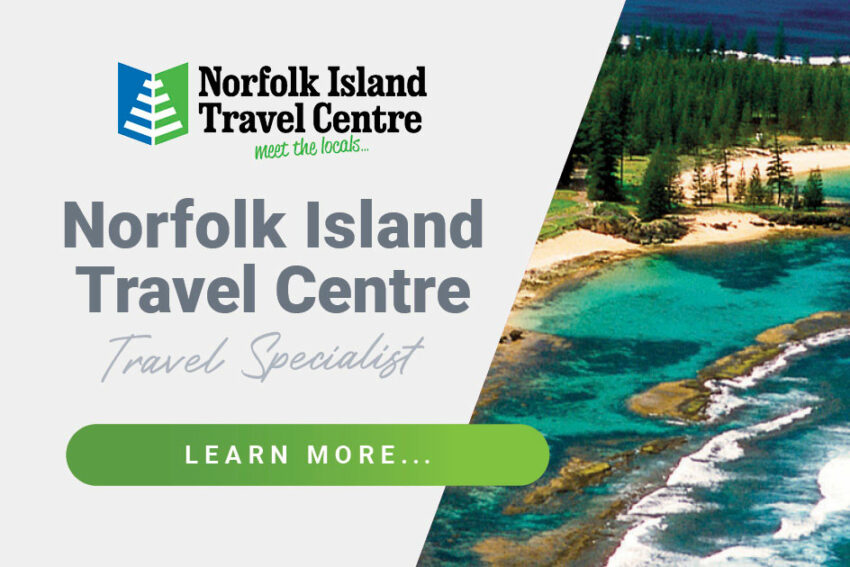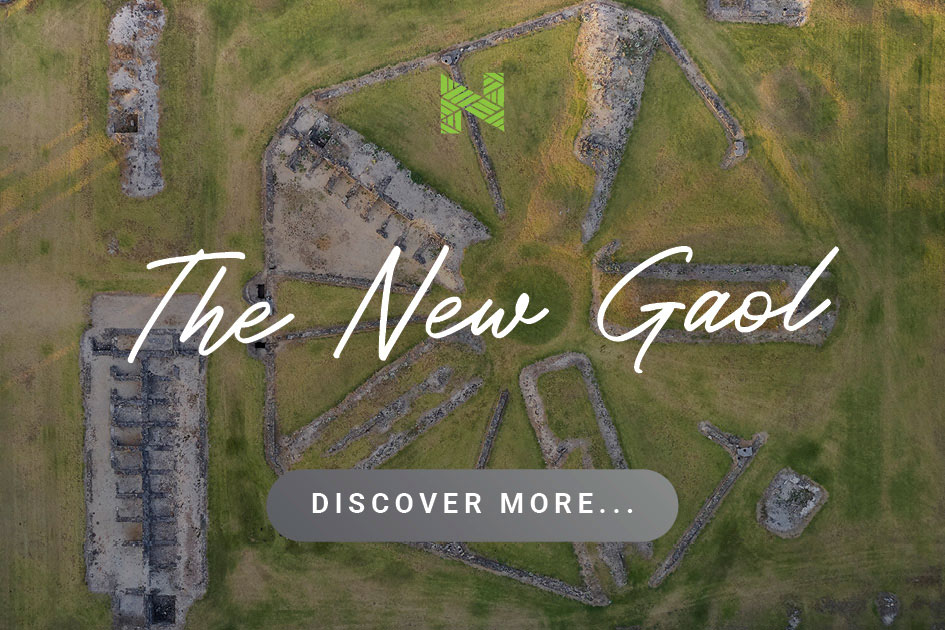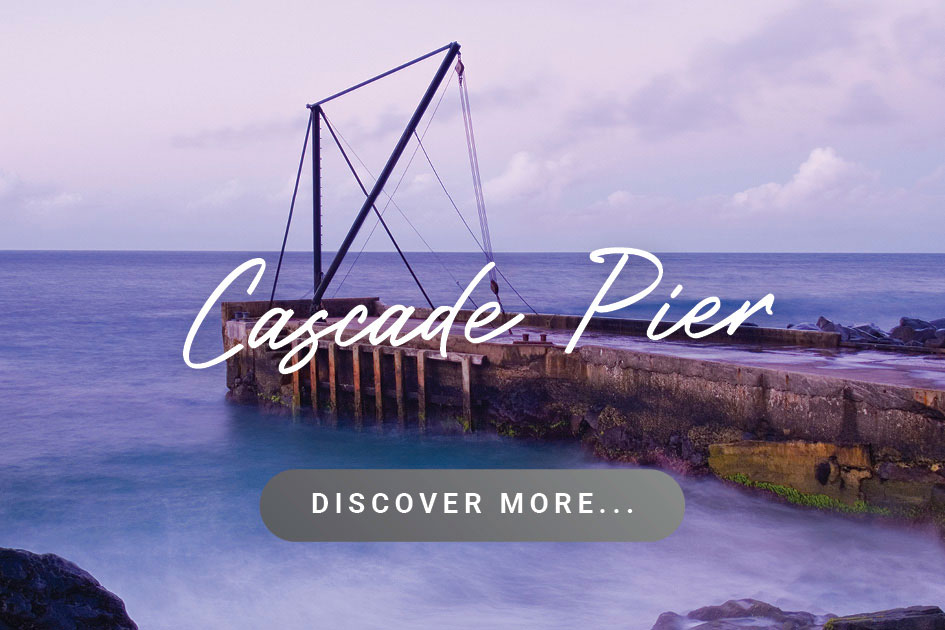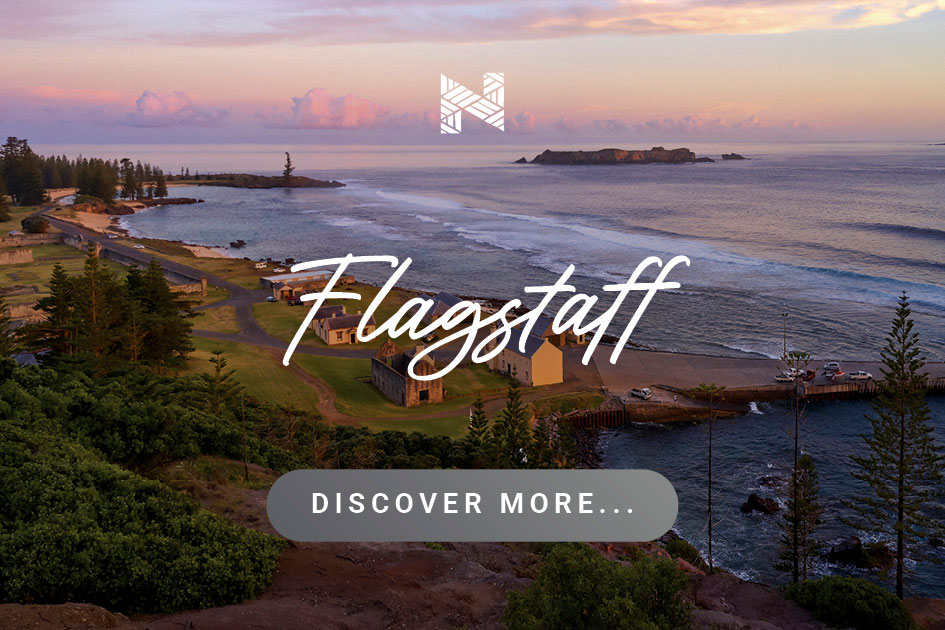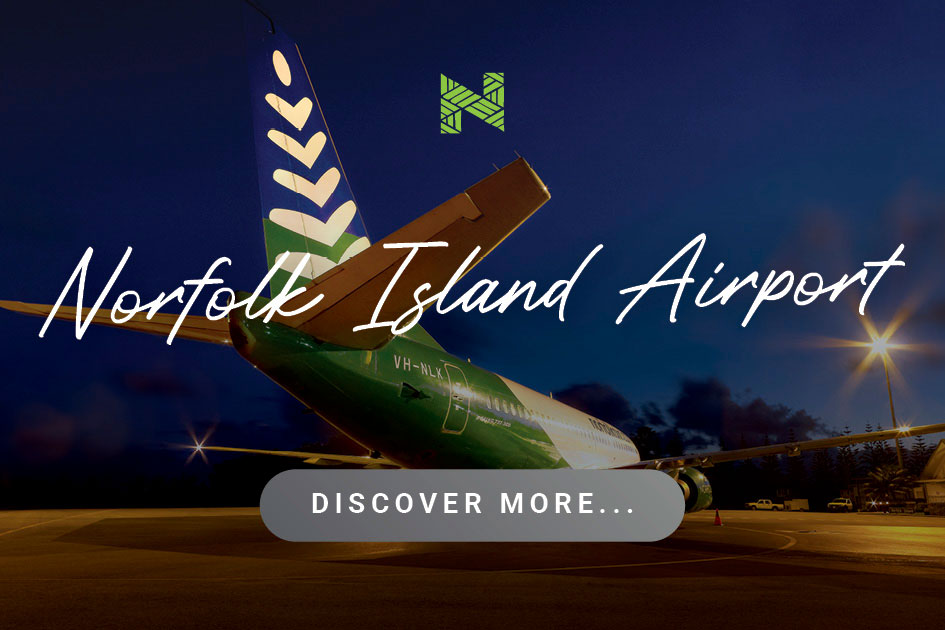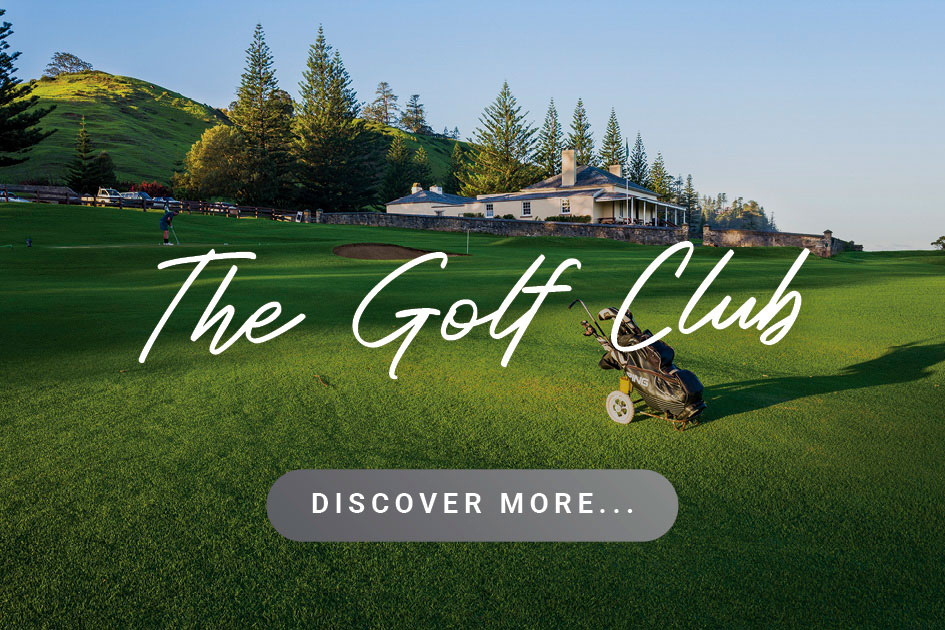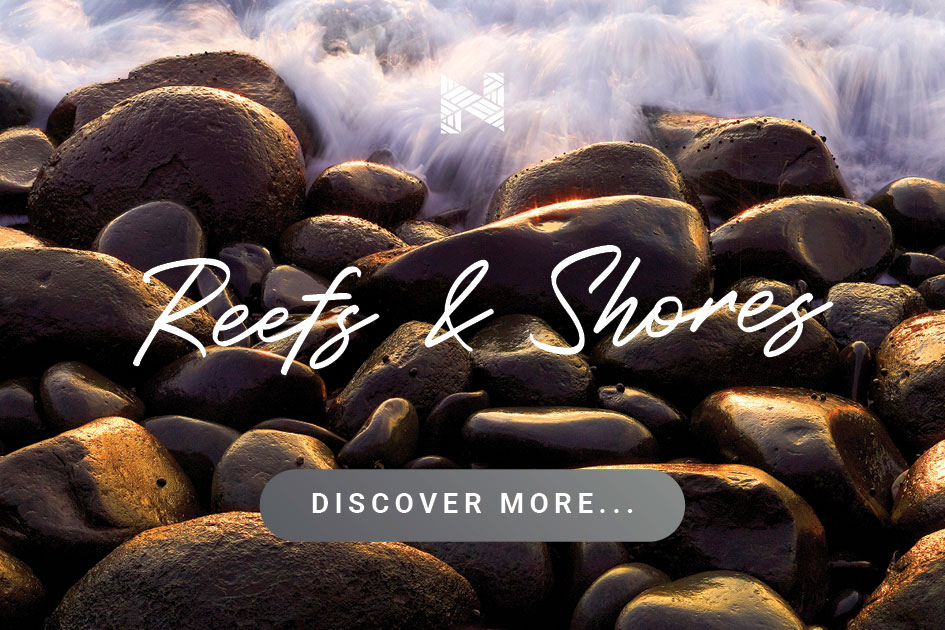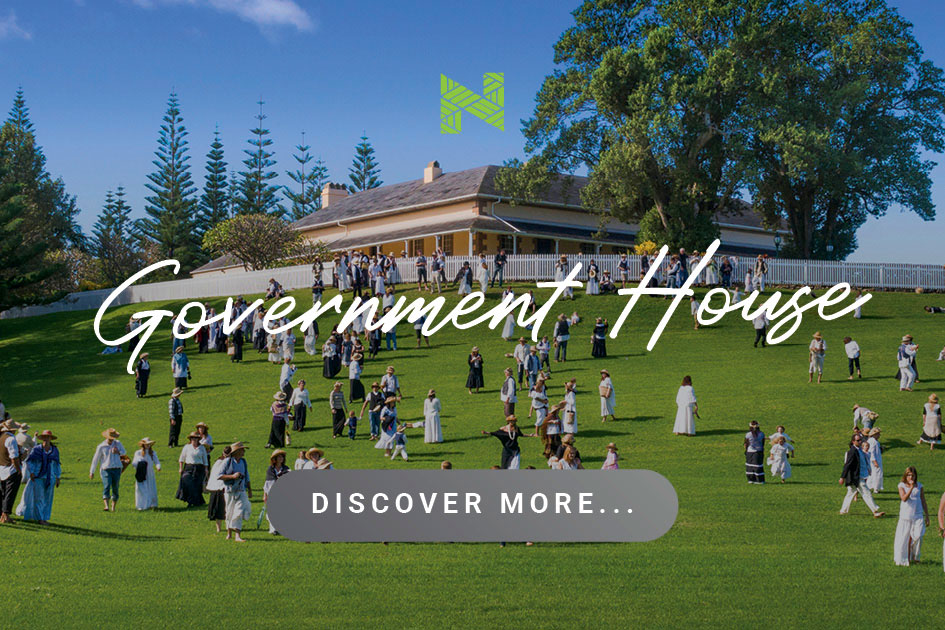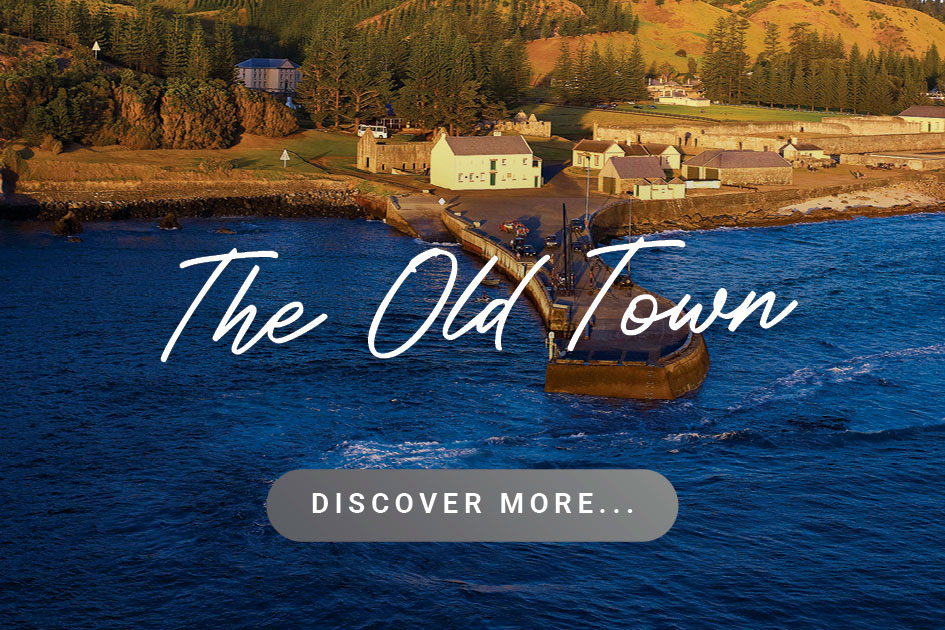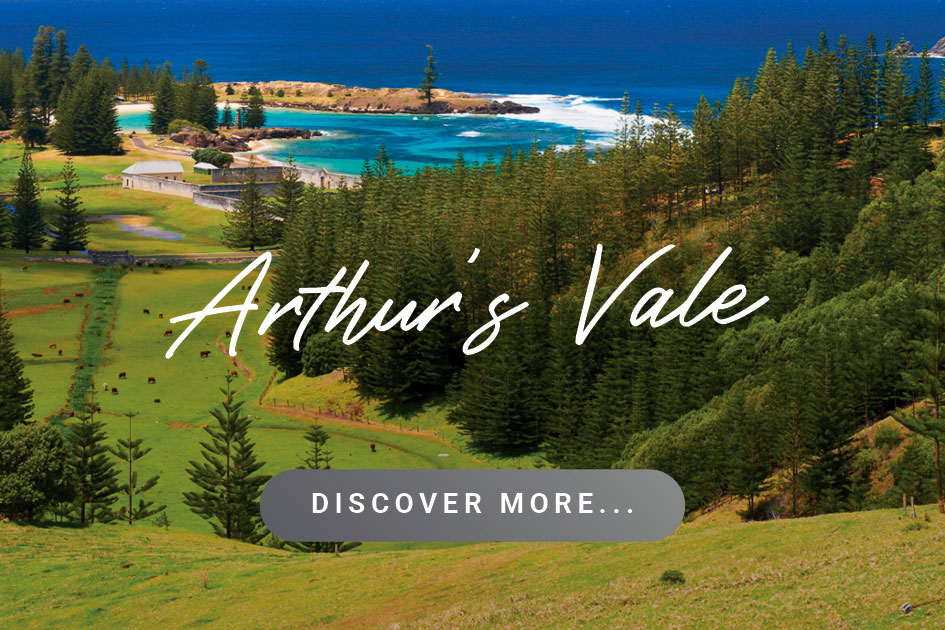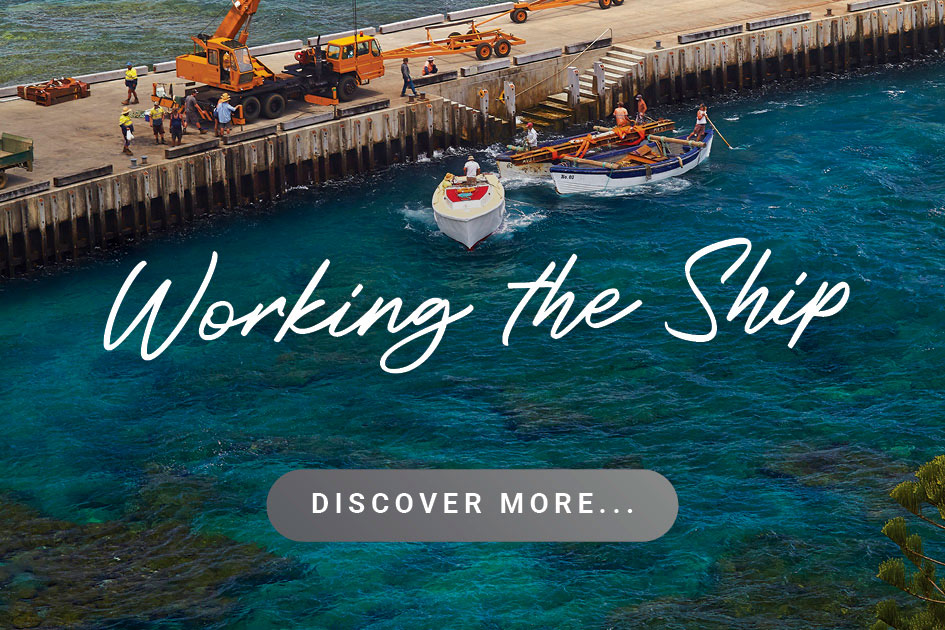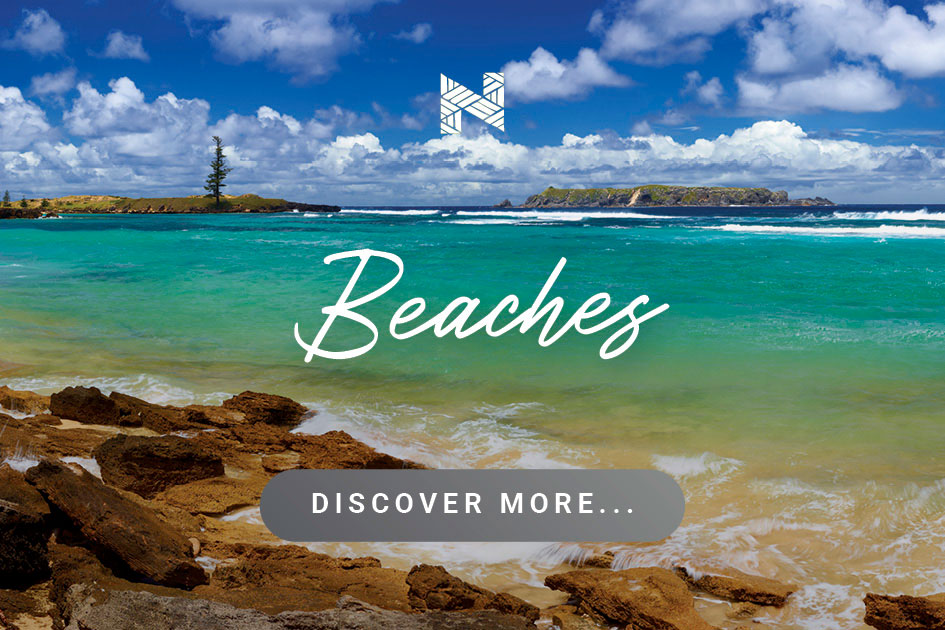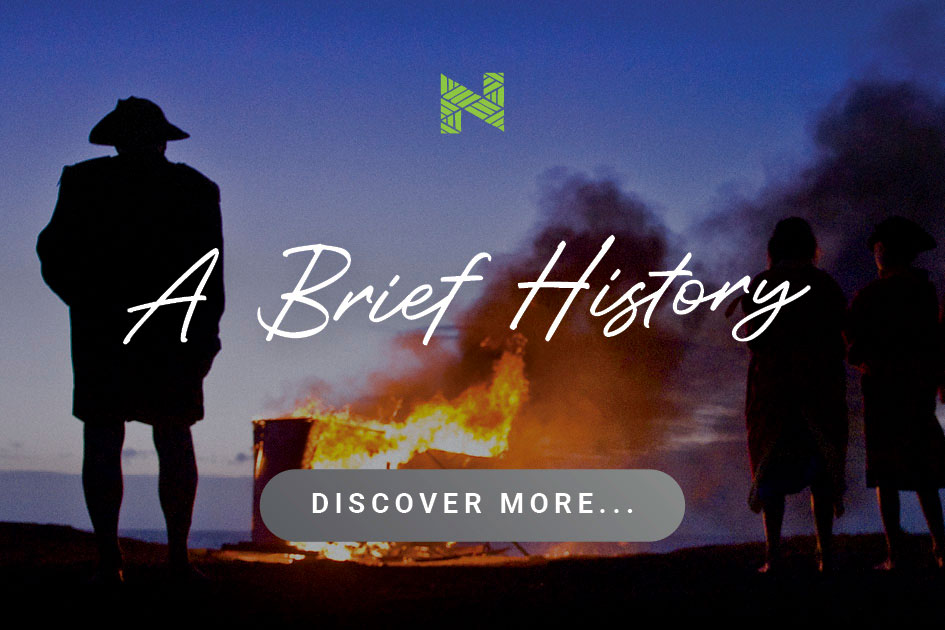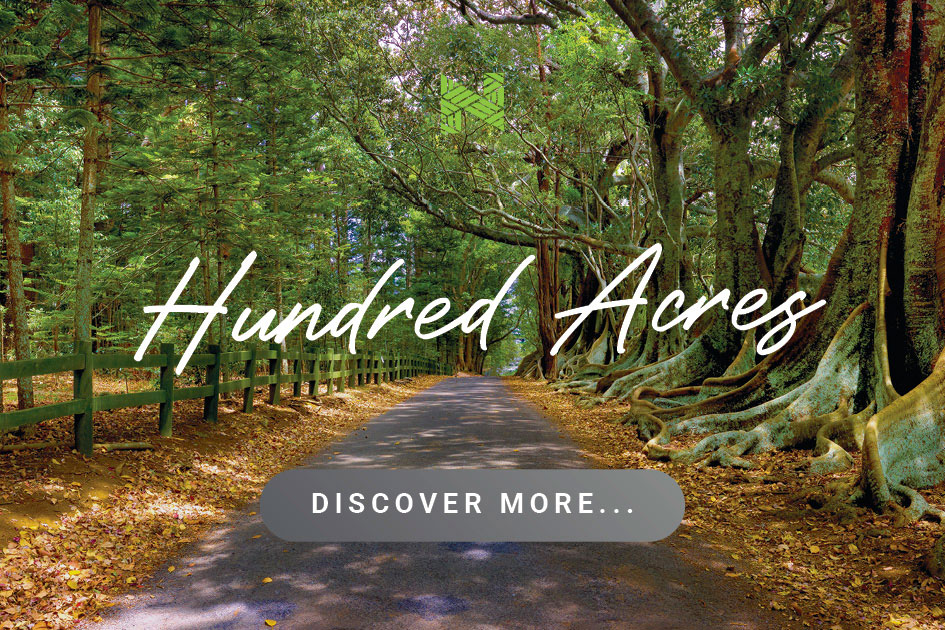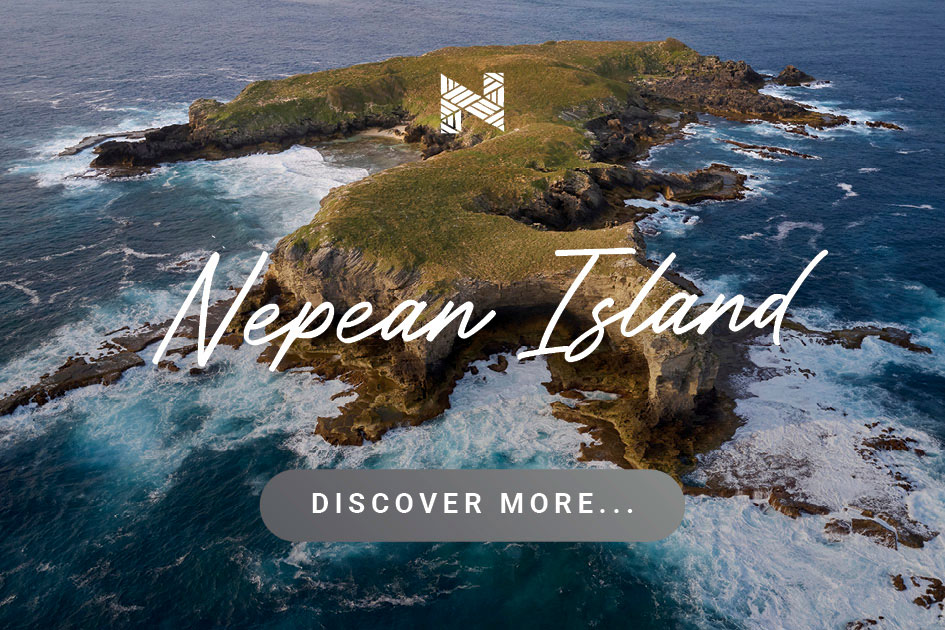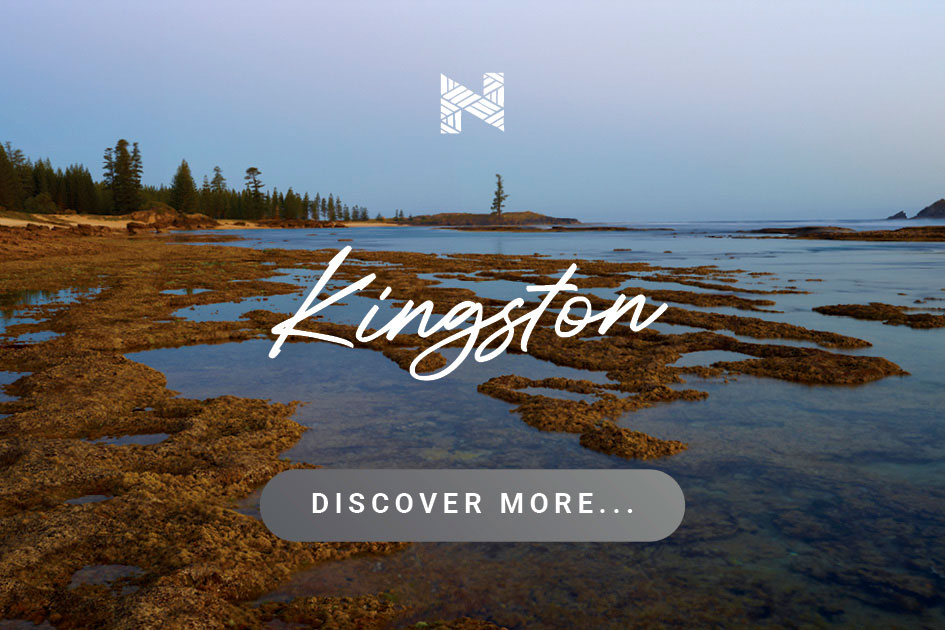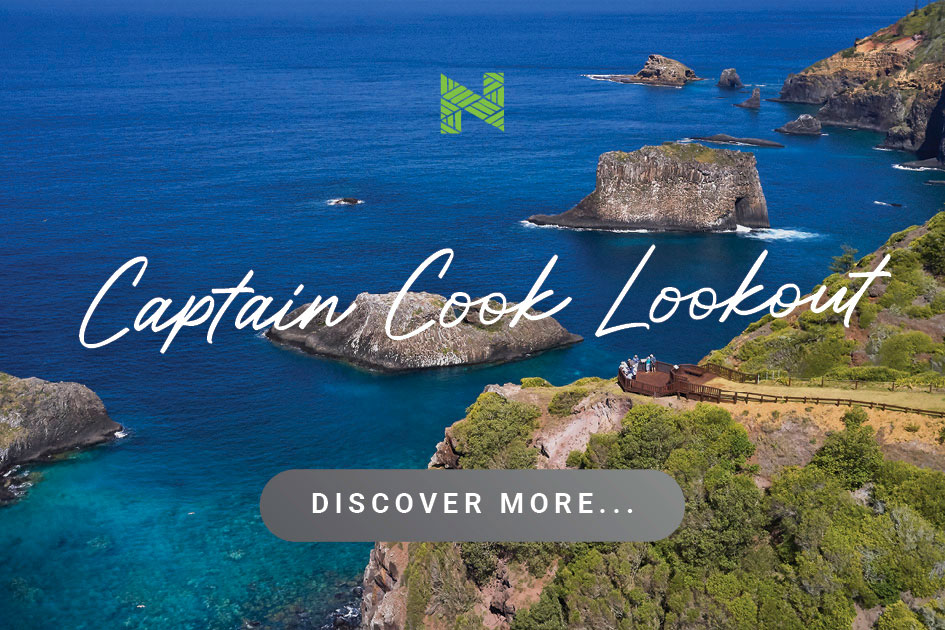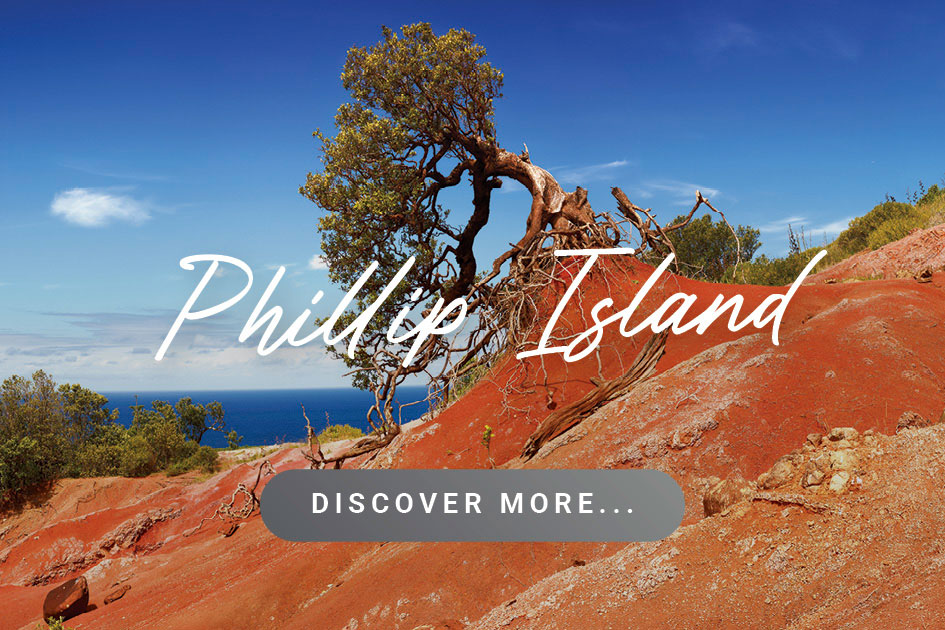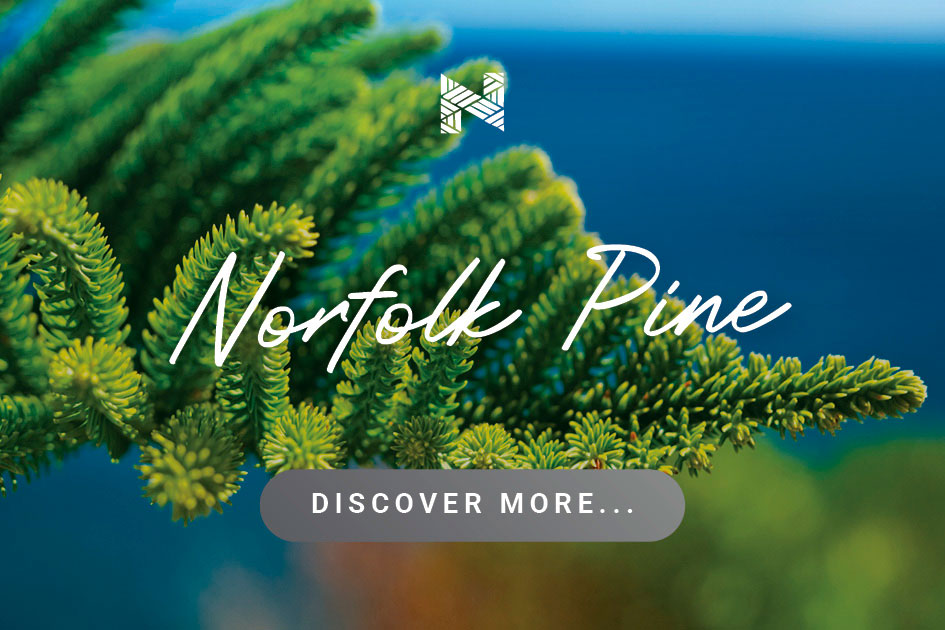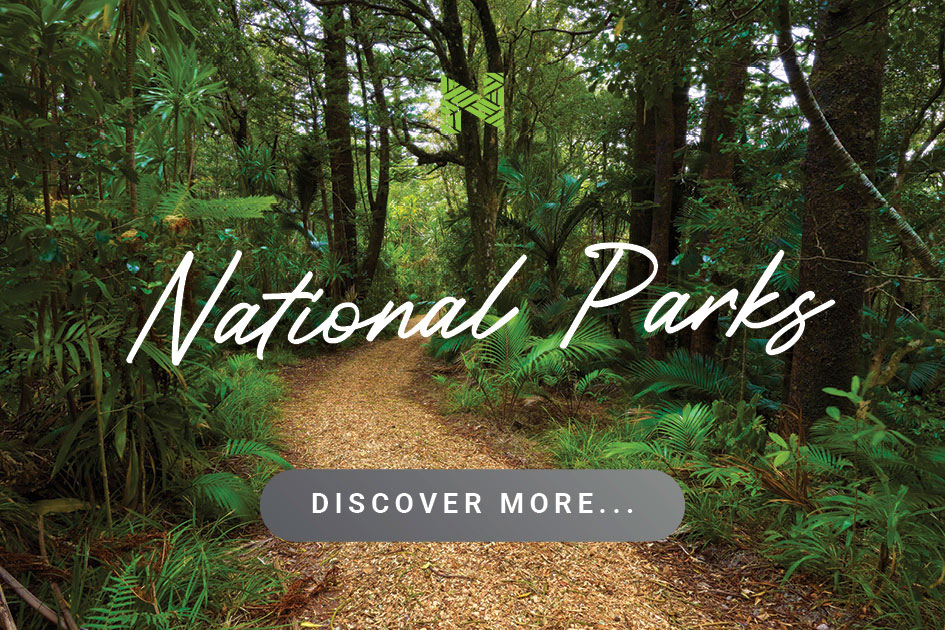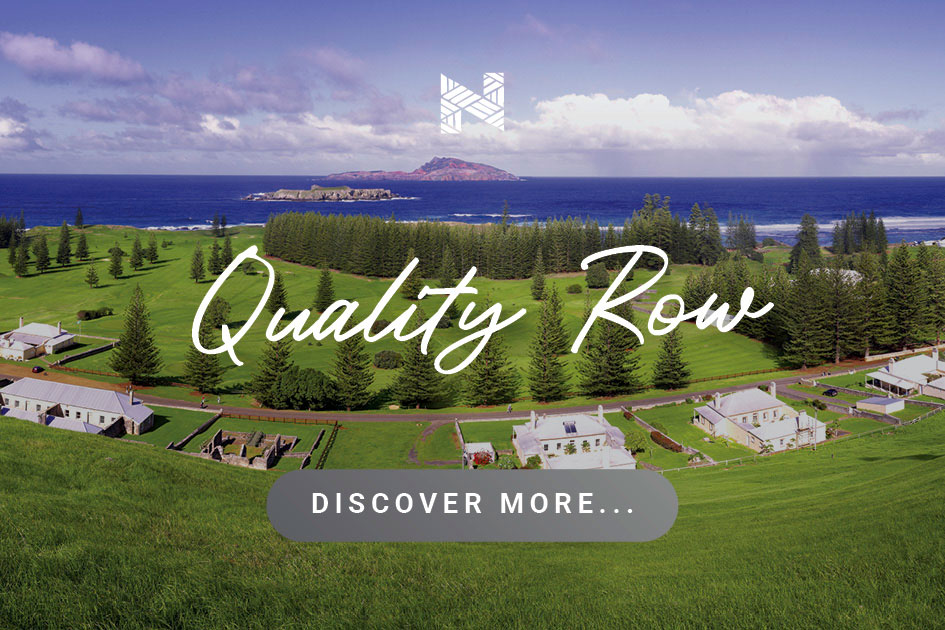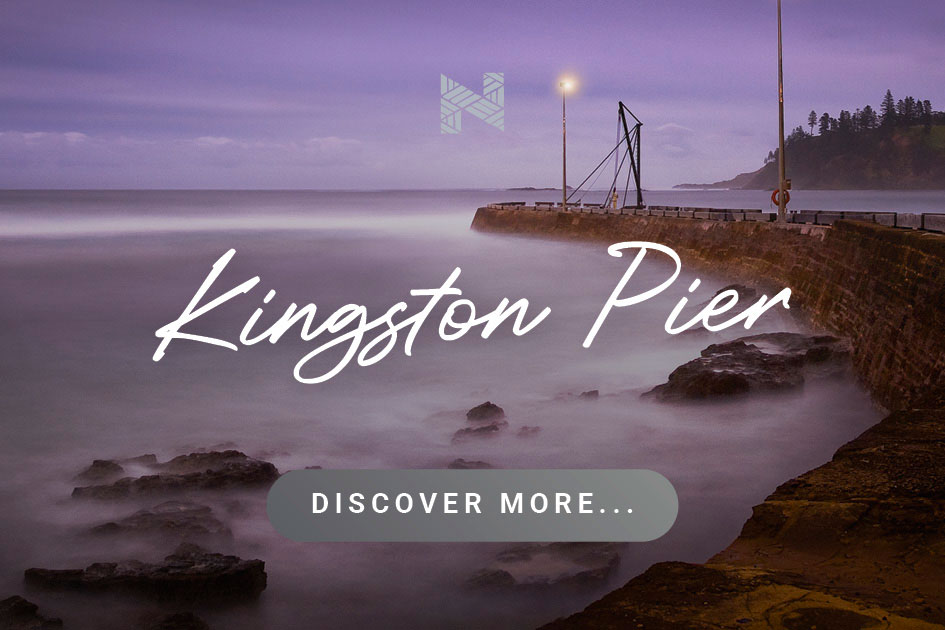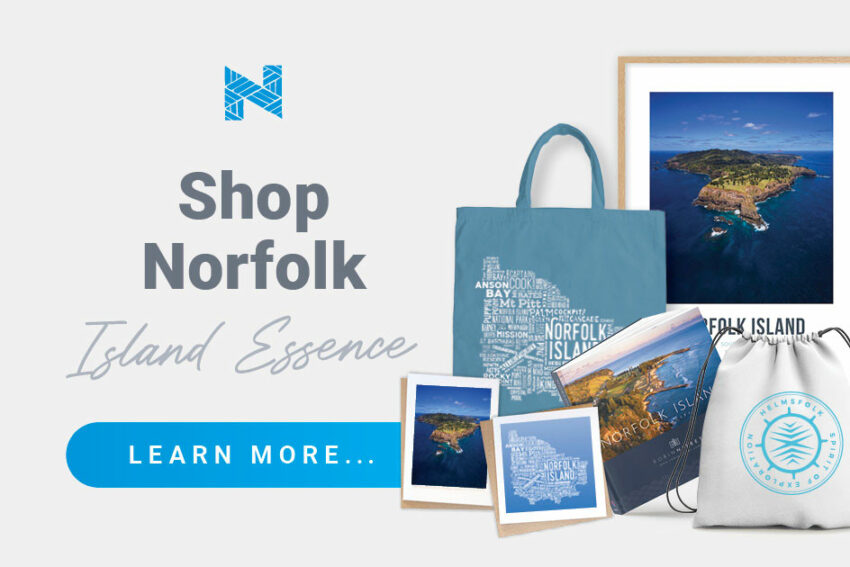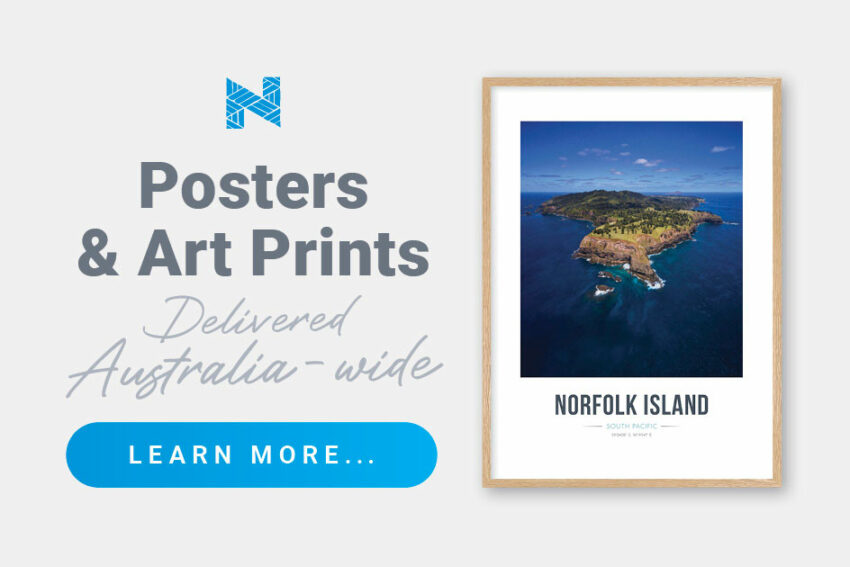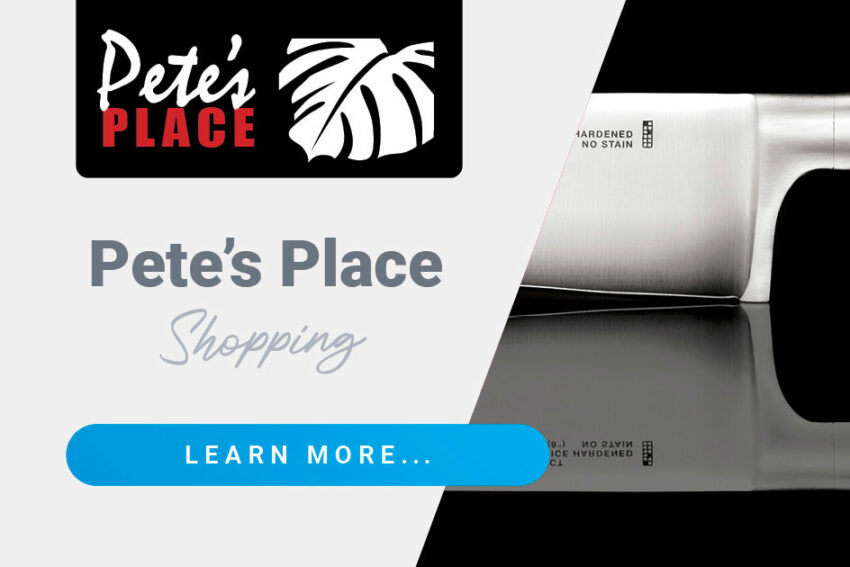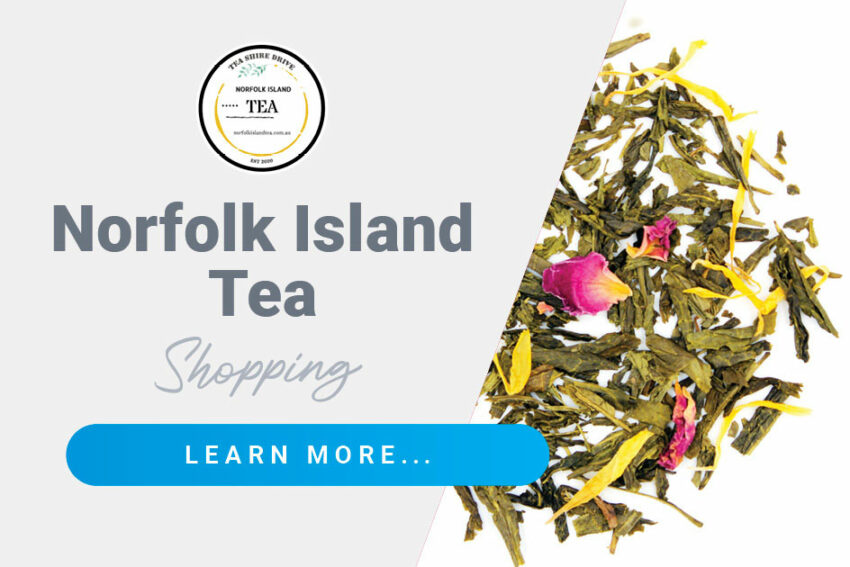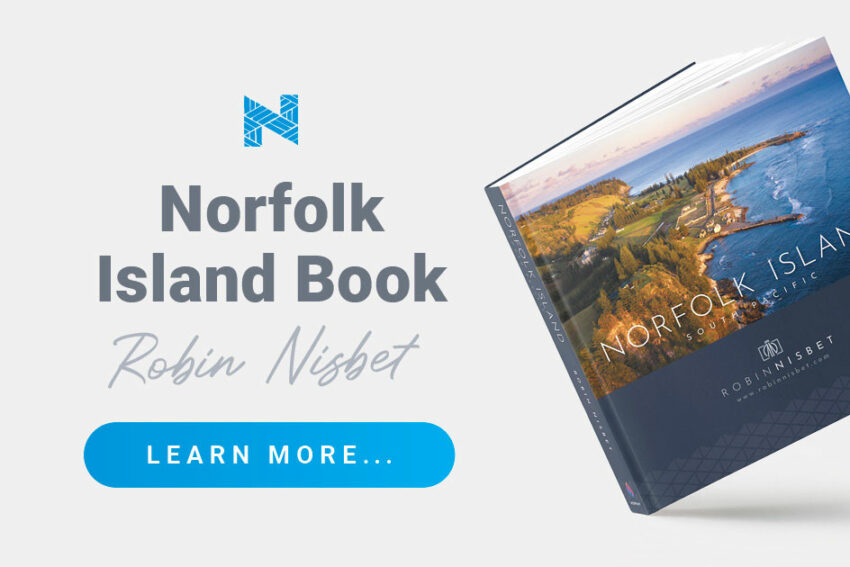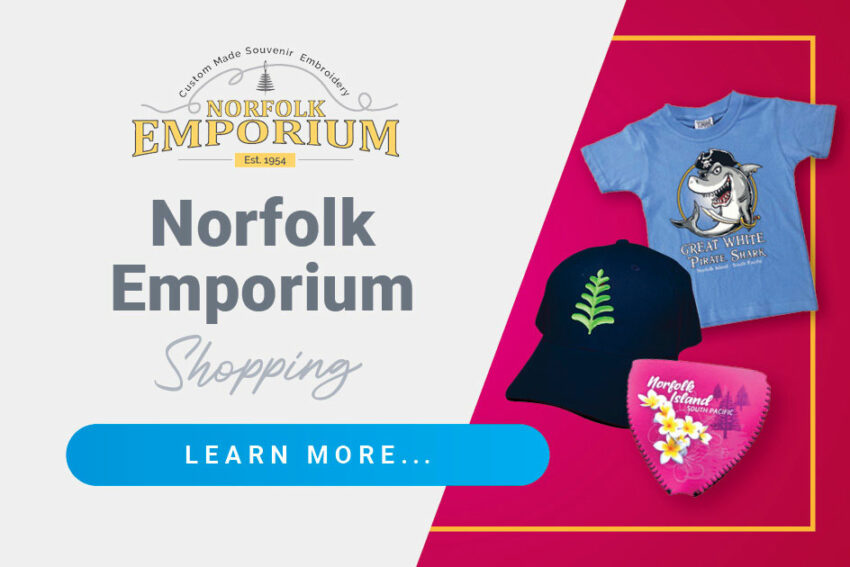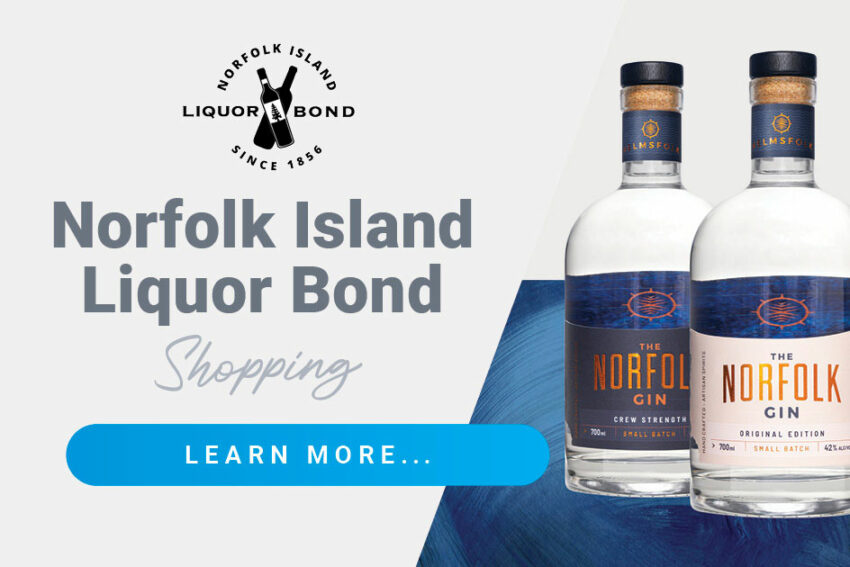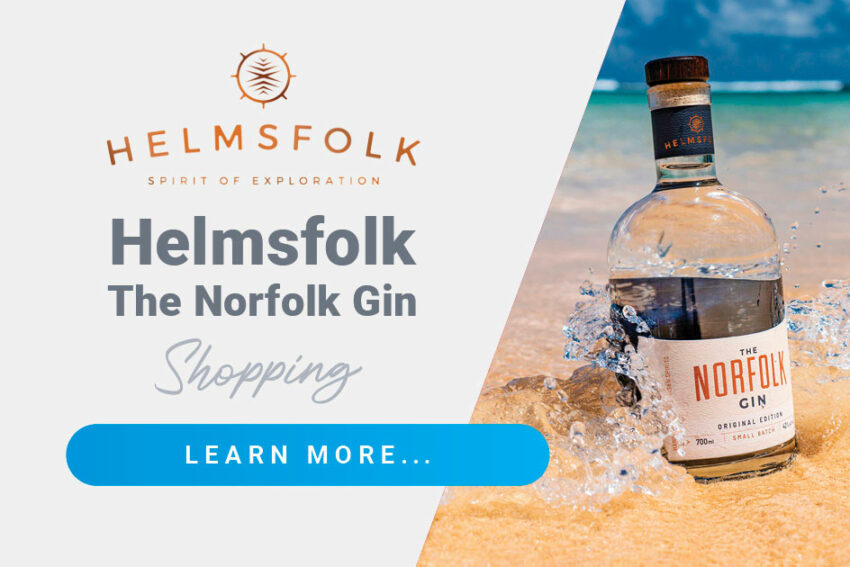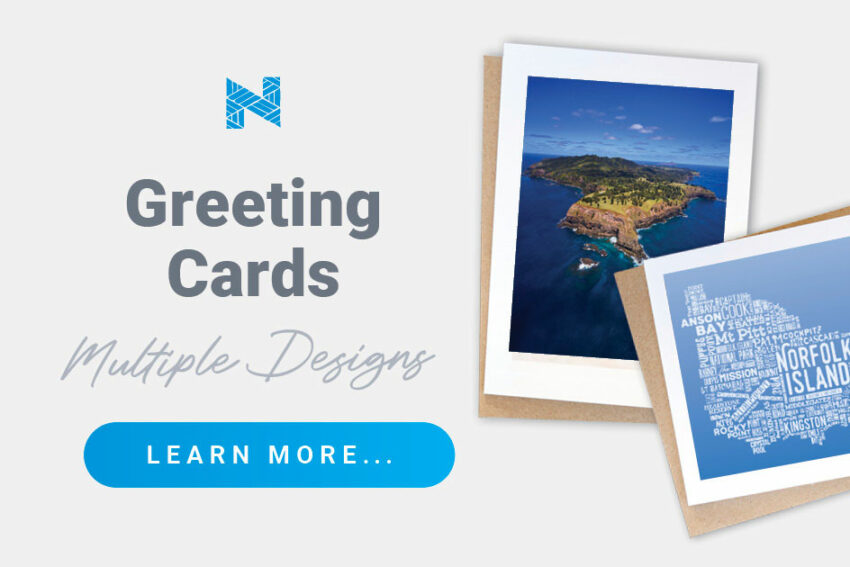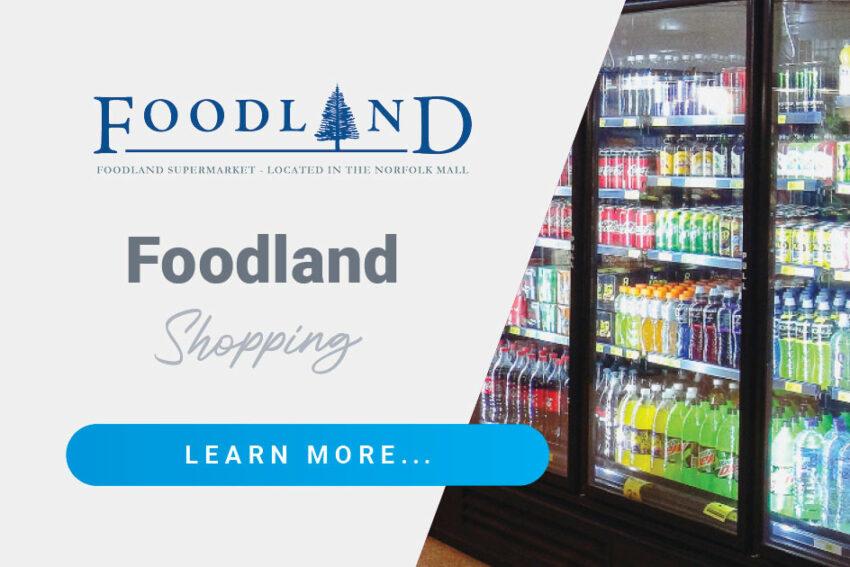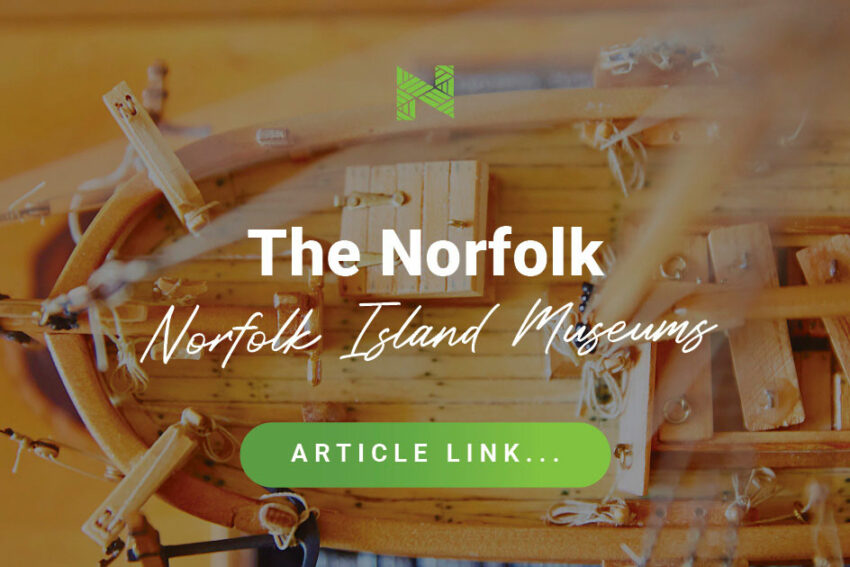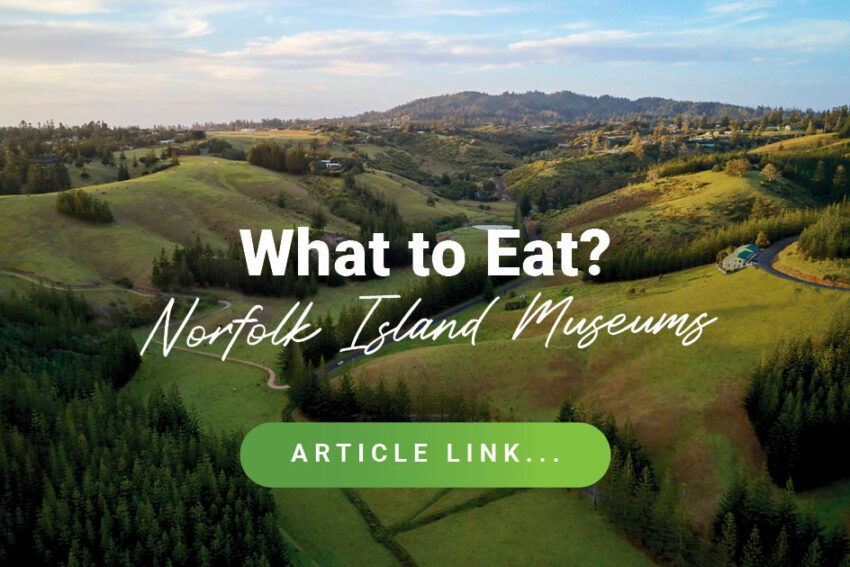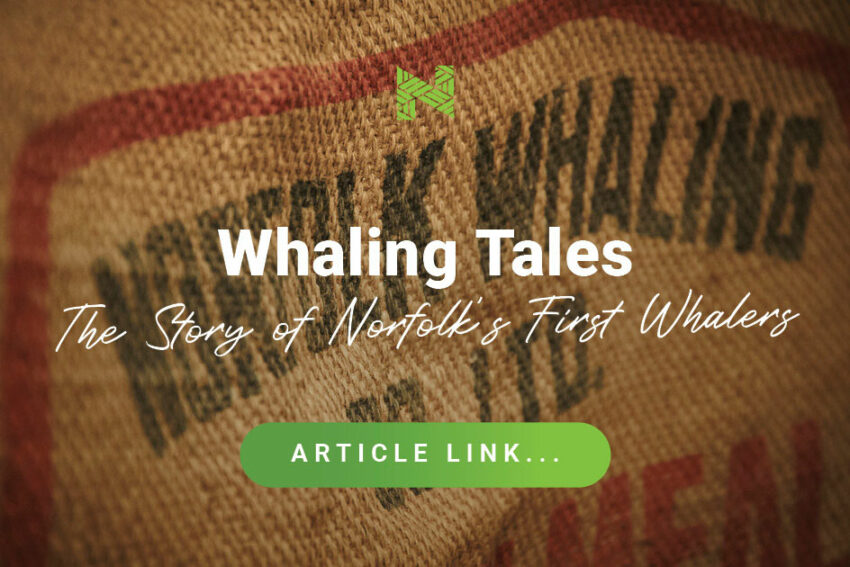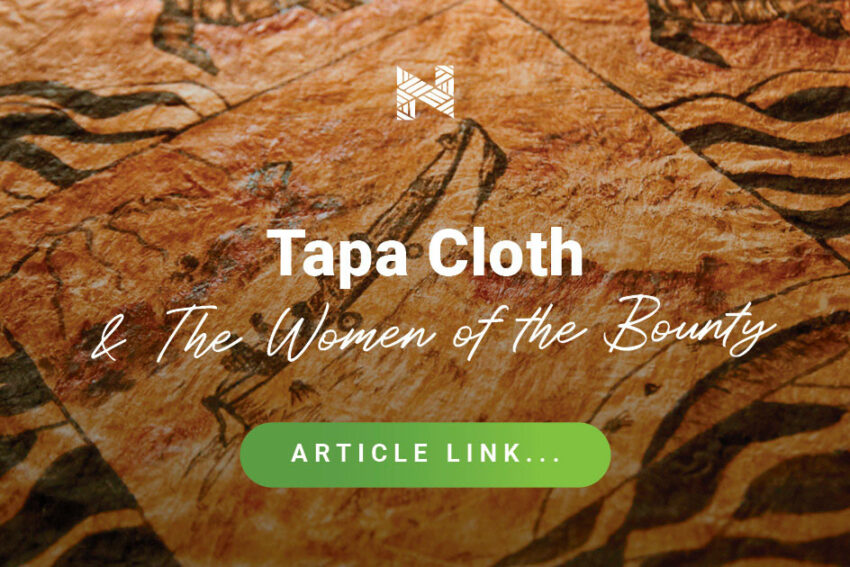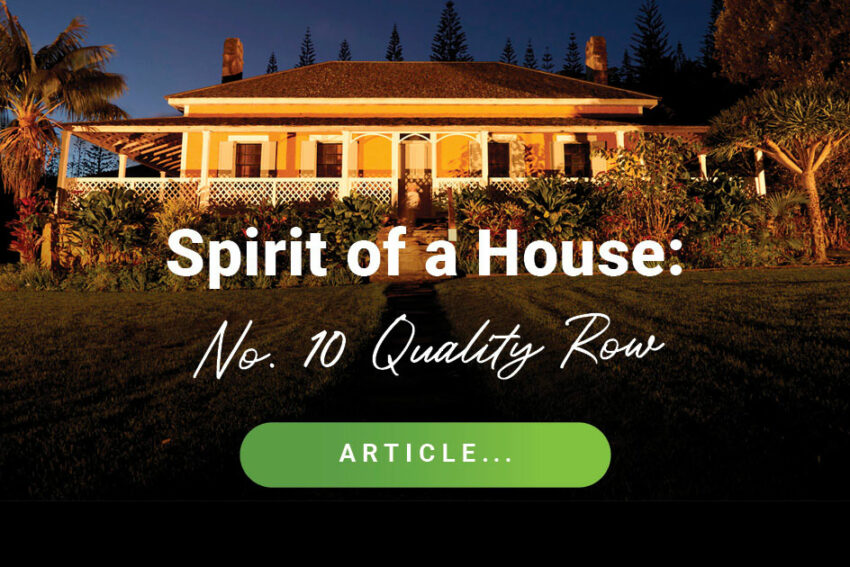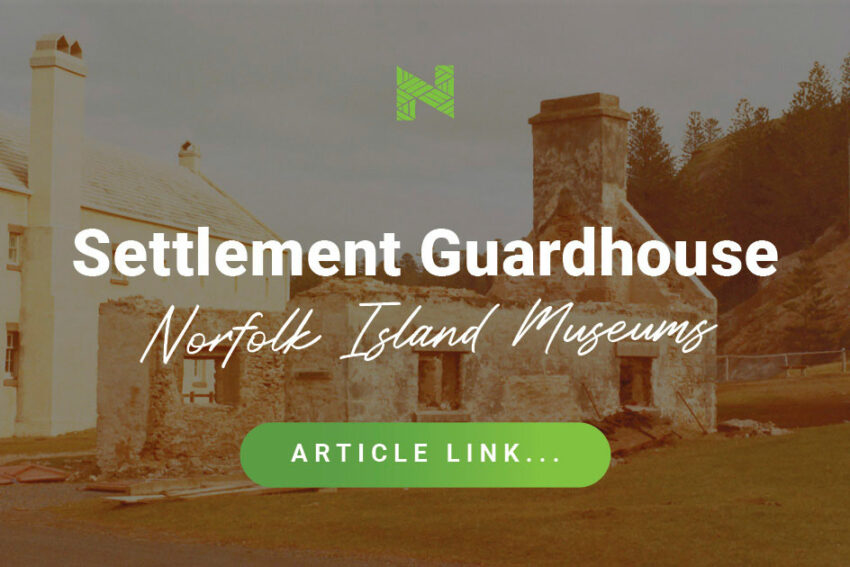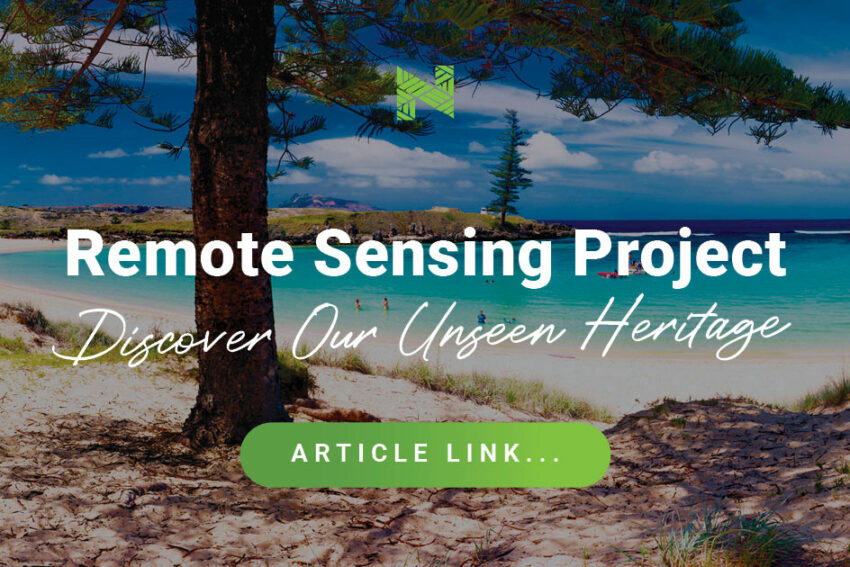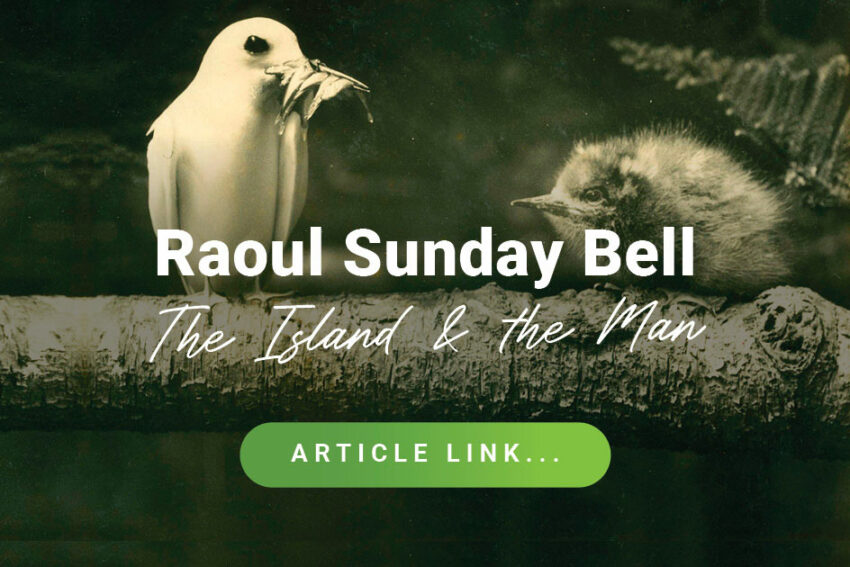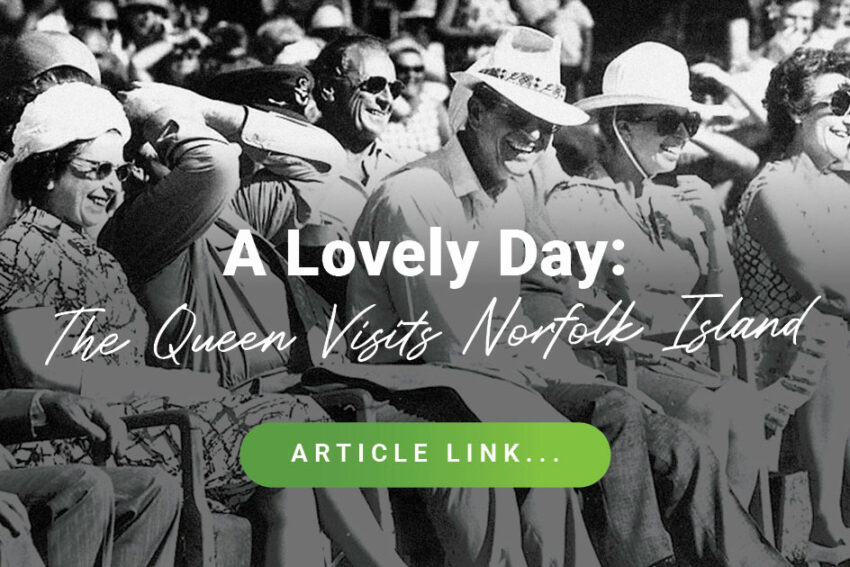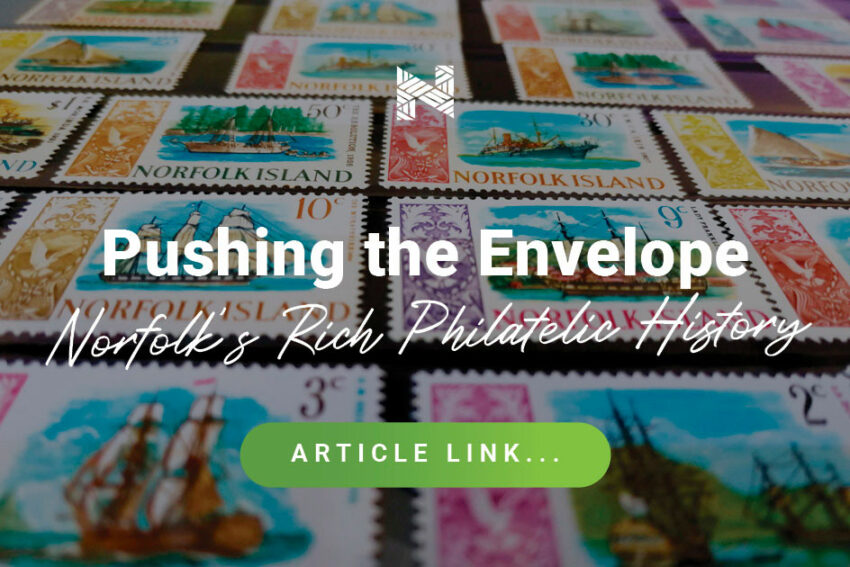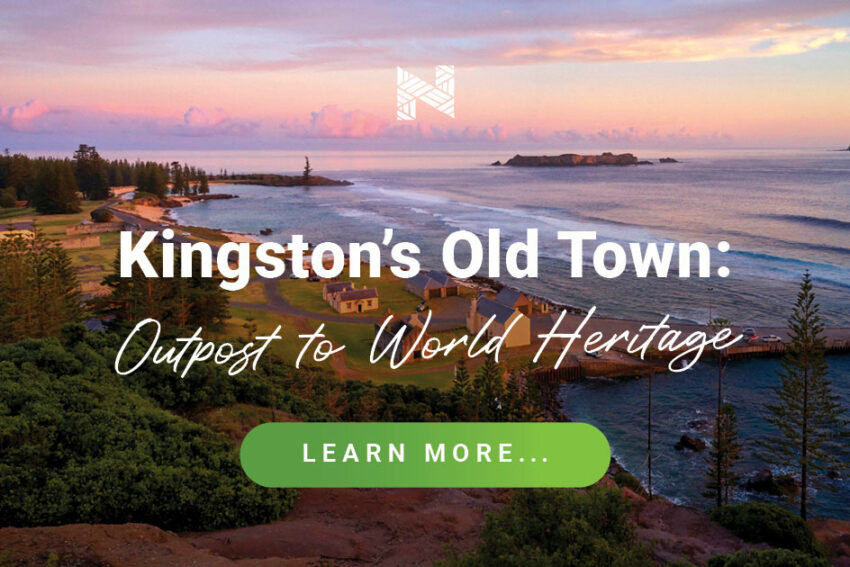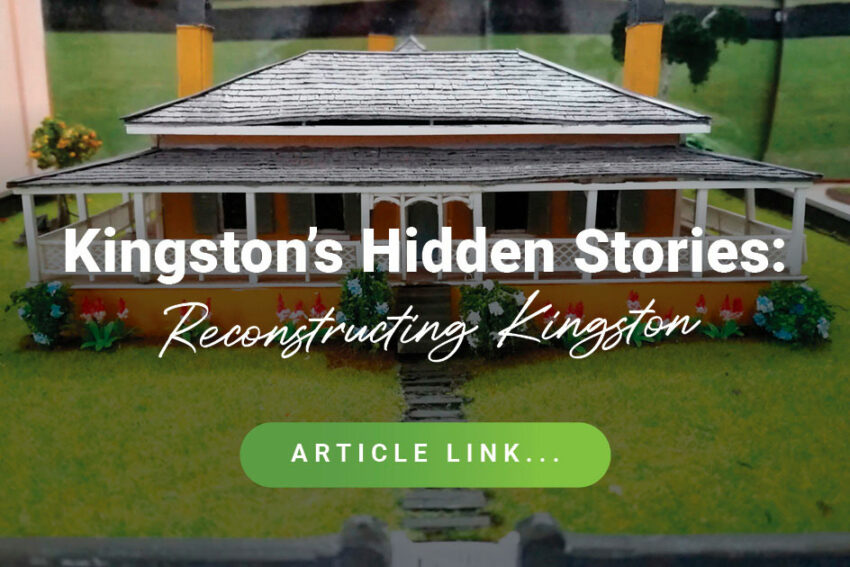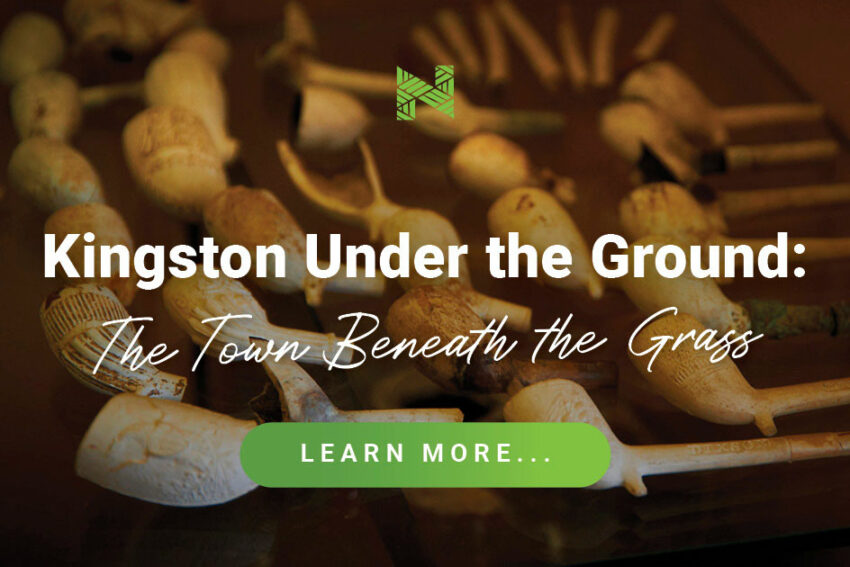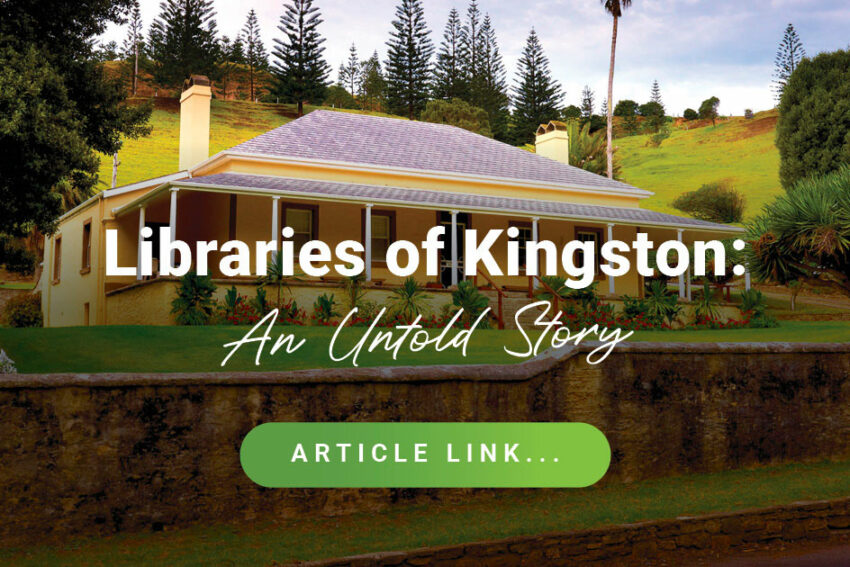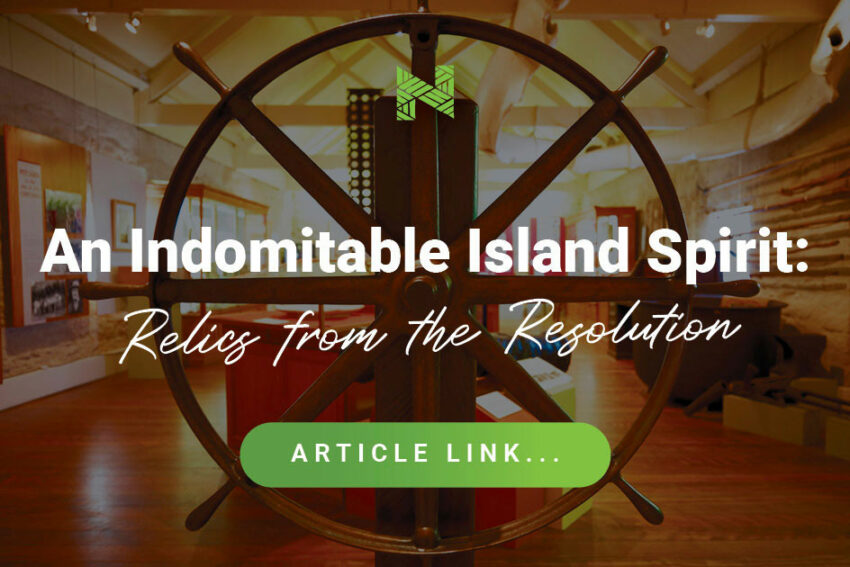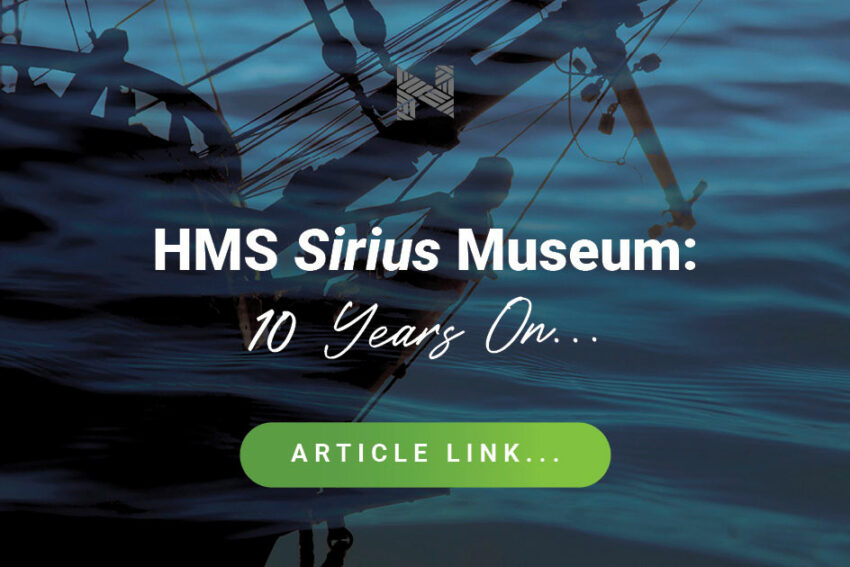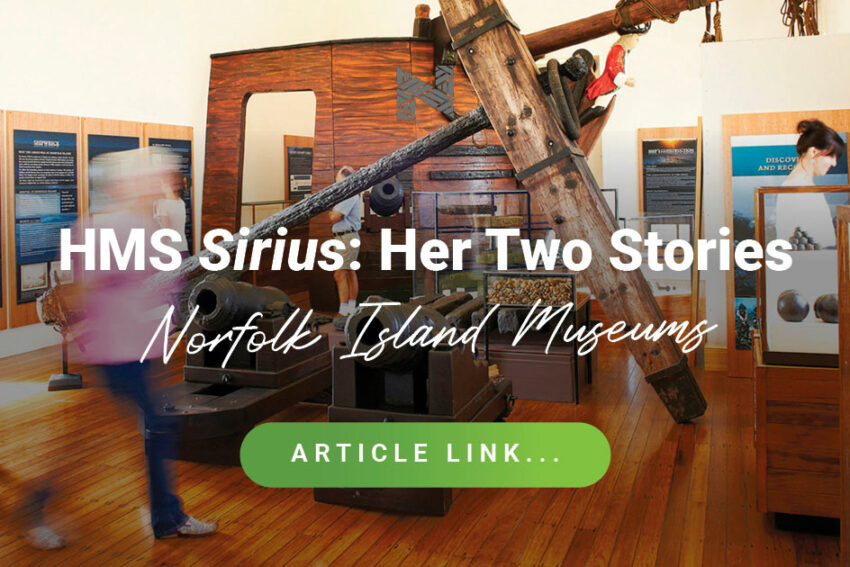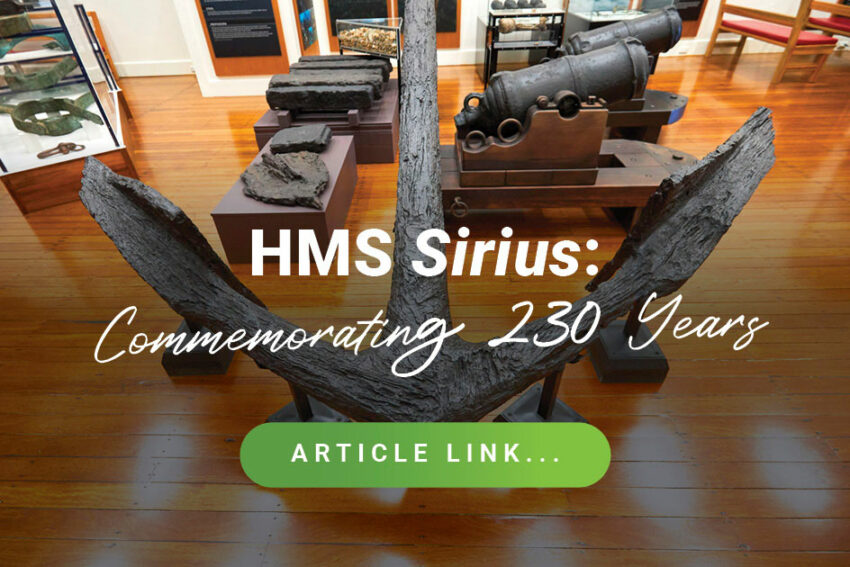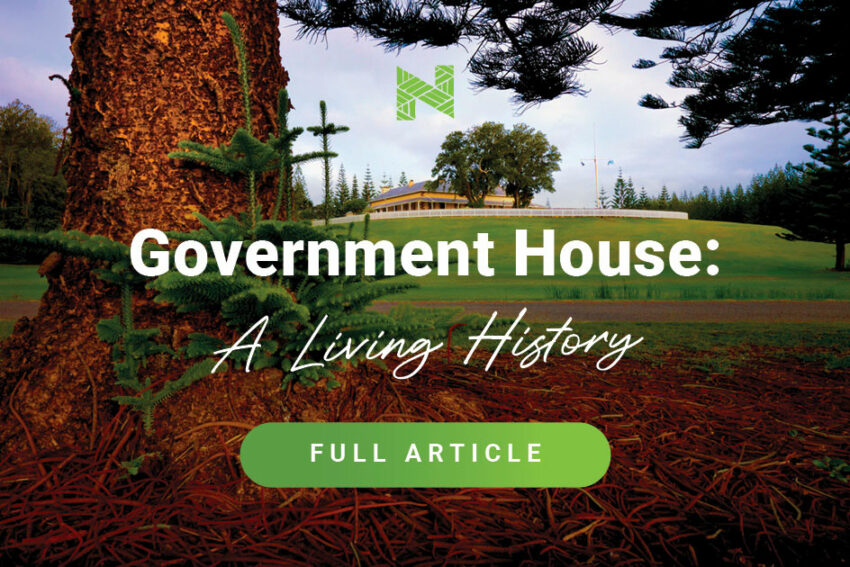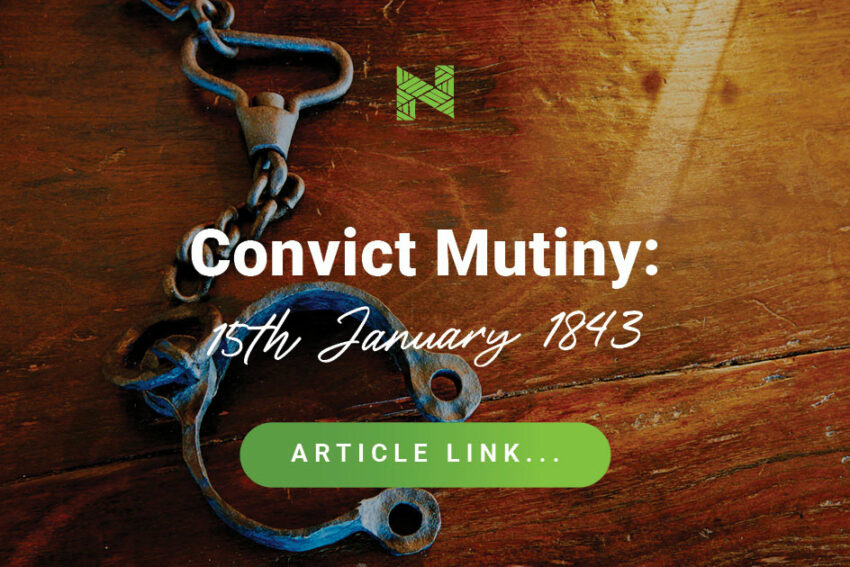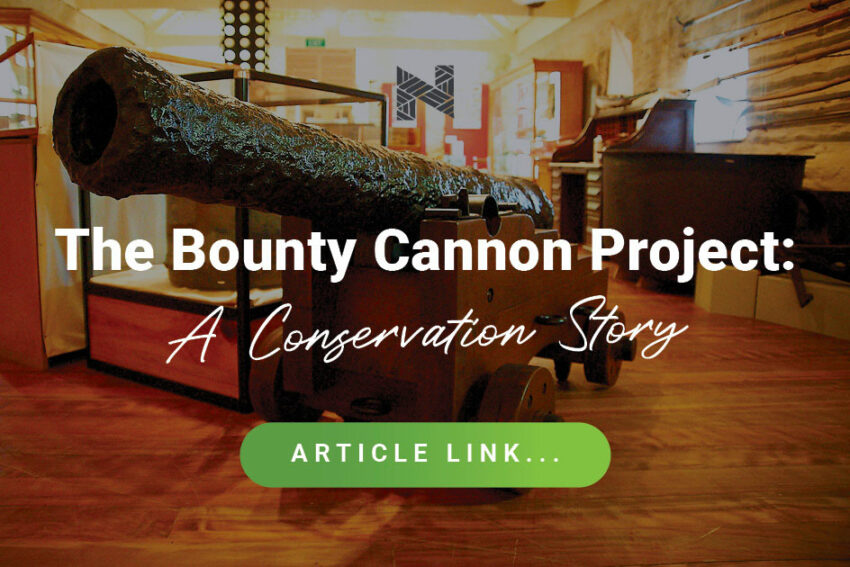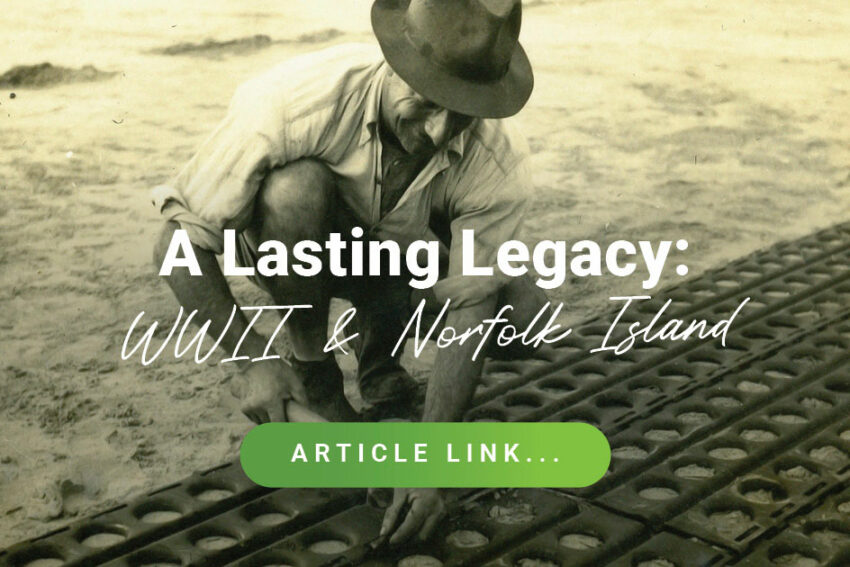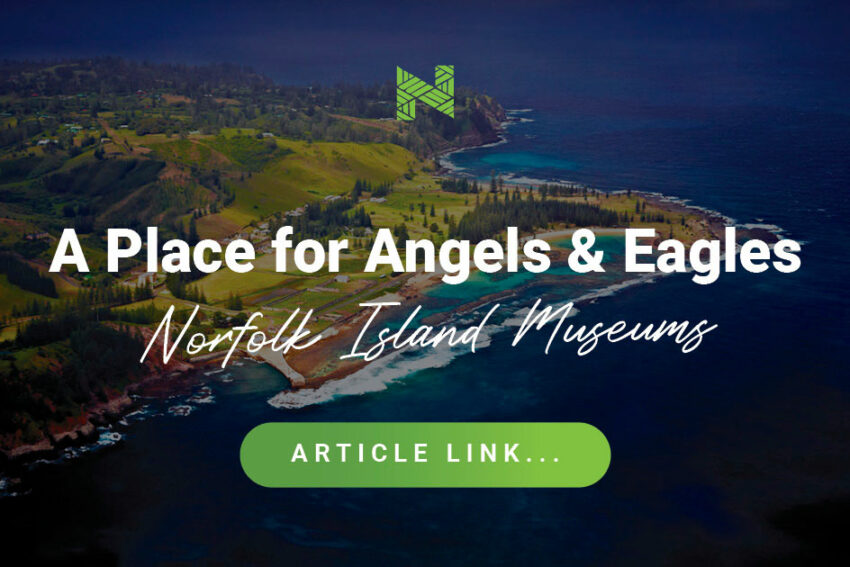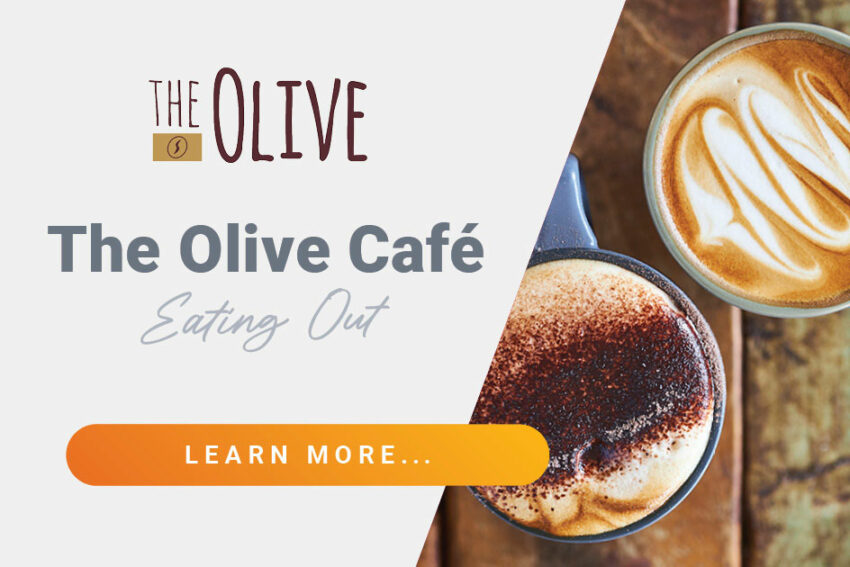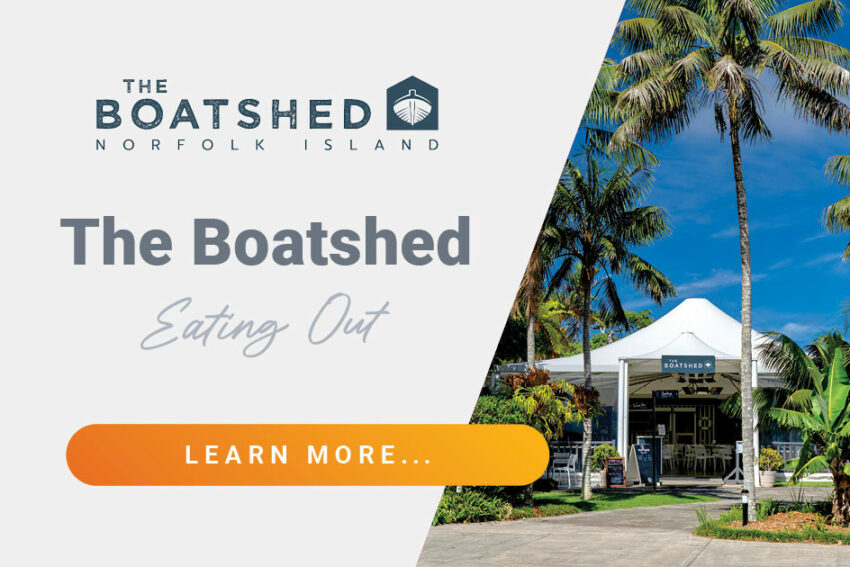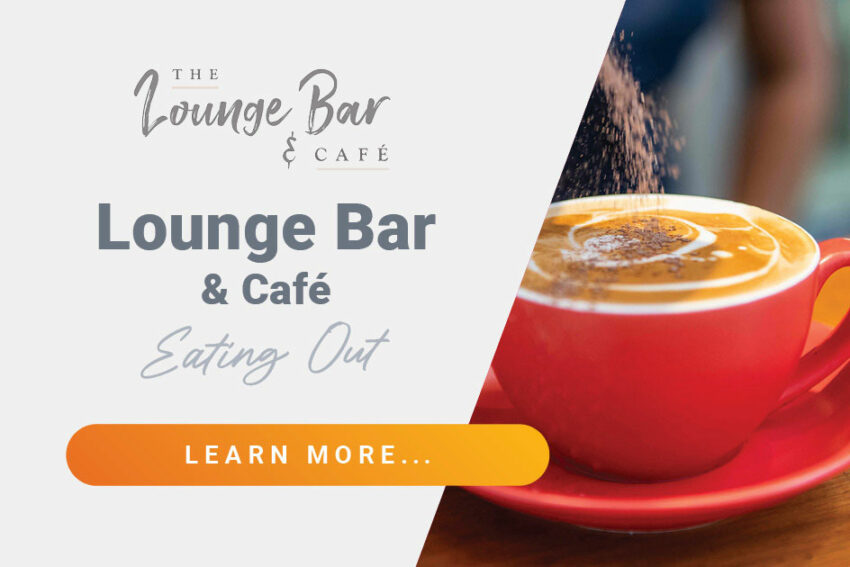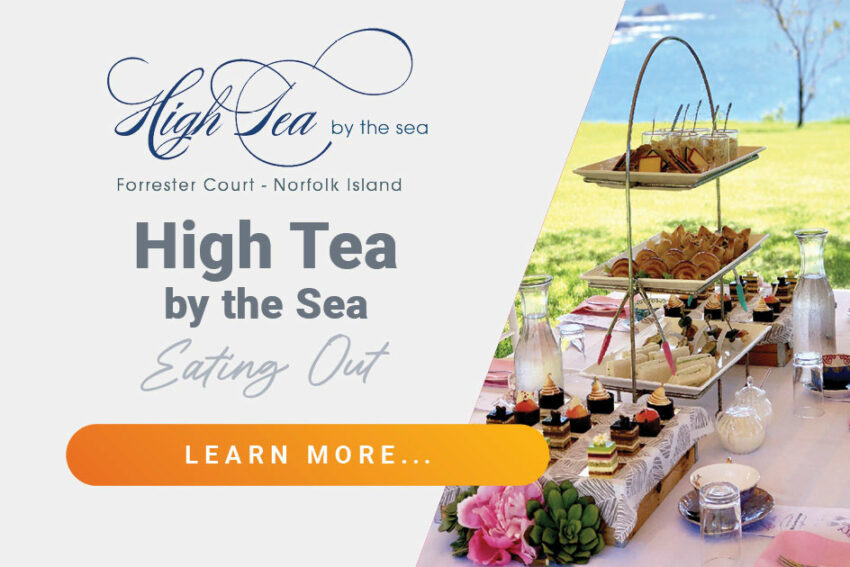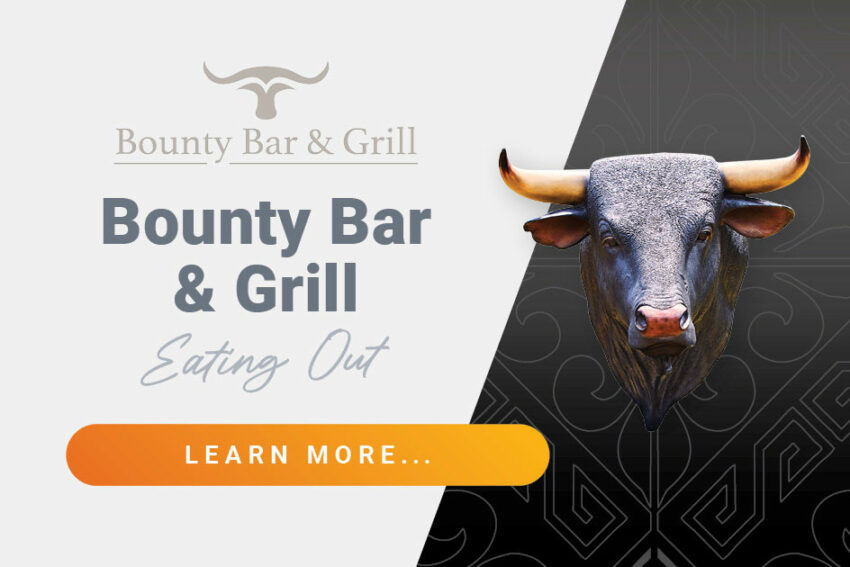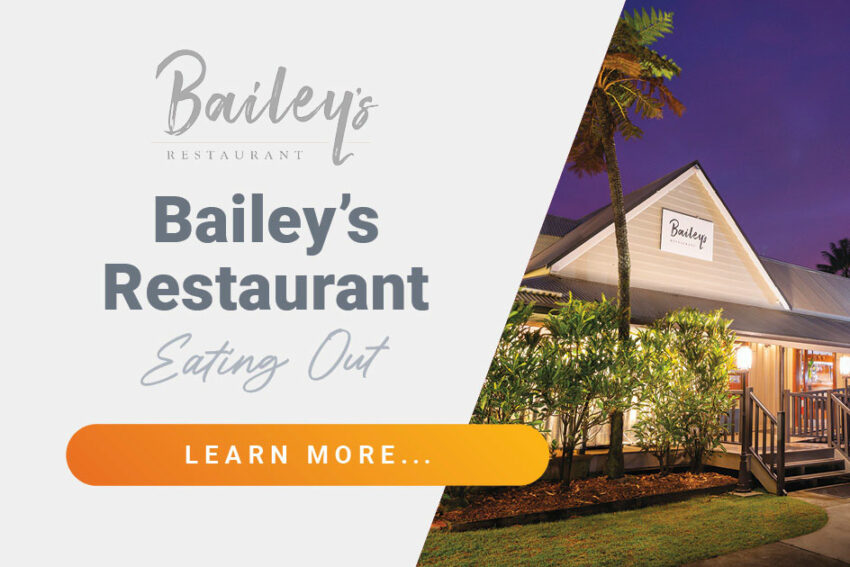Discover Norfolk Island!
Location & Geography

Norfolk Island is a 2 hour flight from Sydney or Brisbane, and 1.5 hour flight from Auckland.
The eroded remnants of a basaltic volcano active over 2 million years ago, leaves the Island approximately 8 x 5km in size and boasting 32 km of coastline. Norfolk has rich volcanic soil for growing the delicious fresh produce you will taste on Island. You will also spot two islands to the south: the furthest being Phillip Island and the closest being Nepean Island.
Climate
Norfolk has a sub-tropical climate, very rarely falling below 10ºC in winter or rising above 26ºC in summer. While most rain falls between the months of April and August, like anywhere, it can rain at anytime. As the sea breezes on Norfolk can be quite crisp make sure you bring a cardigan or jacket with you at night when heading out on fish frys, and other night time activities.
Getting Around
Norfolk has a private taxi service, but no public transport system. Hiring a car is highly recommended. Many of the tour companies have pickups from central locations for their tours. Driving around can help overcome Norfolk’s hilly terrain, although riding a bike or walking is an enjoyable way to see the scenery up close. If you haven’t booked a car before your arrival, stop into any of the friendly rental car companies listed in the Discover Norfolk Tours and Activities section and start discovering Norfolk today.
Keeping In Contact
Keeping in contact with family and friends is easy. Norfolk’s international calling code is +6723 followed by a five-digit phone number. Most accommodation properties offer IDD calls, should you require them, and most have Wi-Fi facilities. There are a number of Wi-Fi hotspots in Burnt Pine & Kingston or you get data through the Norfolk Telecom 3G/4G telecommunications network. If you bring your mobile phone (unlocked to an Australian telecom provider), you can purchase Norfolk Telecom SIM packs from participating outlets.
Television & Radio
Norfolk is home to its own local radio station and TV station. You can listen to Radio Norfolk on 89.9FM or 1566AM. During the day there are weather reports, local notices and trading hours announced every few hours. Several overseas radio stations are re-broadcast on Island also. Norfolk also receives a number of Free to Air digital TV channels from Australia and some accommodation properties also offer satellite channels.
Airport & Airlines
There is only one airport on Norfolk Island. Flights are operated by Qantas. Up-to-date flight times can be found in the local paper, online and by phoning 13 737. All flights are international, and travellers will need a passport or certificate of identity. Many smaller aircraft also use Norfolk’s strategic location for refuelling en route from other Pacific islands to Australia.
Language
The predominant language on Norfolk is English, however you will hear many speak the local language, Norf’k, that is a mix of English and Tahitian. This language was spoken by the Pitcairners and is still in use today.
There are a number of Norf’k Language books and dictionaries available for purchase on Island should you wish to learn more.
Customs & Quarantine
Norfolk has a unique and diverse ecosystem and it needs to be protected. As such, please pay particular attention to any notices regarding what items are prohibited to import. Importing unprocessed foods, weapons, drugs and other items are all controlled. Global international airport security rules apply on Norfolk, prohibiting the carry on of aerosols and certain liquids.
Police
Officers are seconded from by the Australian Federal Police (AFP) and supported by locally engaged Special Constables. Norfolk Island Police Force (NIPF) is Australia’s smallest police force. While some traffic laws differ from mainland Australia and other countries, drink-driving and speeding are criminal offences. Police ask all drivers to take care, drive safely and adhere to the speed limits and be considerate of other road users, including other vehicles, pedestrians and livestock. You are lgally required to wear seatbelts on Norfolk Island. Whilst Norfolk Island is known for its friendly and welcoming environment, police encourage residents and visitors alike to keep their valuables safe and secure.
Banks
There is a Commonwealth Bank branch located on Norfolk Island in the centre of Burnt Pine near the roundabout. There is an ATM located at the branch. Local currency is the Australian Dollar. Most retailers accept major credit cards and have EFTPOS facilites.
Road Rules
The speed limit on Norfolk Island is 50km/h around most parts of the Island, 40km/h through Burnt Pine and 30km/h on the Kingston foreshore and past the school at Middlegate. You might notice the ‘Norfolk Wave’ when driving around the Island. Join in and wave back, but remember, cows and other livestock have right of way!
National Parks and Reserves
Signposts around the Island will guide visitors to the various entrances to the National Park areas, Public Reserves and the Botanic Garden. Our rainforests are formed on the chance dispersal of plants and animals over the ocean. As such, unique and endemic species have evolved creating a rich and diverse ecosystem. There are around 200 species native to Norfolk Island, and approximately 40 endemic species and 15 plant species are considered to be critically endangered. Trails guide you through the parks, with interpretive boards providing more information on the area. Spectacular views of all the Norfolk isles can be seen from the peak of Mt Pitt. The coloured trails marked on the map correspond to the track guides and signage found in the National Park.
Beaches
There are at least seven public beaches on Norfolk, so chances are you can score one all to yourself. Laze about on the sand, read a book and soak up the sun. The water is warmest in January, although it doesn’t drop below 18ºC in winter. The most popular beach is Emily Bay. It is the most sheltered and protected from the sea by a coral reef. It also offers a pontoon that the locals call ‘the raft.’
The reef at Kingston is the second most southern coral reef in the world. You can snorkel amongst it in the confines of a protected bay and discover our breathtaking sea life. Try Middle Beach and Slaughter Bay (also at Kingston) too. If surfing is more your thing, many of the locals head out past the reef in Slaughter Bay or head to Bumboras to catch a wave.
Discover Our Partner Sections
Check Out Some of Our Articles Below
Discover Editor's Picks Articles Below











